Category: Schemes
Product Linked Incentive (PLI) scheme of pharmaceuticals
23, Feb 2023

Why in News?
- Department of Pharmaceuticals (DoP) has released the first tranche of incentives under the Product Linked Incentive (PLI) scheme of pharmaceuticals.
About the News:
- Under the Atmanirbharta initiative of the Government, the Department of Pharmaceuticals launched the PLI scheme for pharmaceuticals in 2021
- Objective: To enhance India’s manufacturing capabilities and contribute to product diversification towards high-value goods in the pharmaceutical sector
- Three different categories of products are being supported under the scheme:
- Category 1: Biopharmaceuticals; Complex generic drugs; Patented drugs or drugs nearing patent expiry; Cell-based or gene therapy drugs; Orphan drugs; Special empty capsules, Complex excipients,
- Category 2: Bulk drugs
- Category 3: Drugs not covered under Category 1 and Category 2 such as Repurposed drugs; Autoimmune drugs, anti-cancer drugs, etc.
About the PLI scheme:
- The scheme aims to make India a global hub for manufacturing telecom equipment.
- Its eligibility criteria include achievement of a minimum threshold of cumulative incremental investment and incremental sales of manufactured goods.
- The incentive structure ranges between 4% and 7% for different categories and years. Financial year 2019-20 will be treated as the base year for computation of cumulative incremental sales of manufactured goods net of taxes.
- Minimum investment threshold for MSMEs has been kept at Rs 10 crore and for others at Rs 100 crore.
- Once qualified, the investor will be incentivised up to 20 times of minimum investment threshold enabling them to utilise their unused capacity.
Why is the production linked scheme needed?
- According to experts, the idea of PLI is important as the government cannot continue making investments in these capital intensive sectors as they need longer times for start giving the returns.
- Instead, what it can do is to invite global companies with adequate capital to set up capacities in India.
- The kind of ramping up of manufacturing that we need requires across the board initiatives, but the government can’t spread itself too thin.
- Electronics and pharmaceuticals themselves are large sectors, so, at this point, if the government can focus on labour intensive sectors like garments and leather, it would be really helpful.
The demand for MGNREGS work is unmet
08, Feb 2023

Why in News?
- A statement by People’s Action for Employment Guarantee and NREGA Sangharsh Morcha has provided an estimate of ₹2.72 lakh crore as the minimum budget required.
About the News:
- The allocation for MGNREGA in the Budget is ₹60,000 crore. This is less than 0.2% of the GDP, the lowest ever allocation as a percentage of GDP.
- World Bank economists had estimated that the allocation should be 1.6% of the GDP. In the last two years, the new financial year began with more than one-fourth of the allocation as pending wages from previous years.
- Assuming a conservative estimate that the next financial year will begin with pending wages of ₹15,000 crore and accounting for inflation, in real terms, the allocation for MGNREGA will be less than ₹45,000 crore.
- A statement by People’s Action for Employment Guarantee and NREGA Sangharsh Morcha has provided an estimate of ₹2.72 lakh crore as the minimum budget required.
- As per this, even ₹1.24 lakh crore can only generate 40 days of work per household per year.
About MGNREGA:
- The scheme was introduced in 2005 as a social measure that guarantees “the right to work”. The key tenet of this social measure and labour law is that the local government will have to legally provide at least 100 days of wage employment in rural India to enhance their quality of life.
Key objectives:
- Generation of paid rural employment of not less than 100 days for each worker who volunteers for unskilled labour.
- Proactively ensuring social inclusion by strengthening the livelihood base of rural poor.
- Creation of durable assets in rural areas such as wells, ponds, roads and canals.
- Reduce urban migration from rural areas.
- Create rural infrastructure by using untapped rural labour.
What are the eligibility criteria for receiving the benefits under MGNREGA scheme?
- Must be Citizen of India to seek MGNREGA benefits.
- Job seeker has completed 18 years of age at the time of application.
- The applicant must be part of a local household (i.e. application must be made with local Gram Panchayat).
- Applicants must volunteer for unskilled labour.
Implementation of the scheme:
- Within 15 days of submitting the application or from the day work is demanded, wage employment will be provided to the applicant.
- Right to get unemployment allowance in case employment is not provided within fifteen days of submitting the application or from the date when work is sought.
- Social Audit of MGNREGA works is mandatory, which lends to accountability and transparency.
- The Gram Sabha is the principal forum for wage seekers to raise their voices and make demands.
- It is the Gram Sabha and the Gram Panchayat which approves the shelf of works under MGNREGA and fix their priority.
What is Democratic Decentralisation?
- Democratic decentralization is the process of devolving the functions and resources of the state from the Centre to the elected representatives at the lower levels so as to facilitate greater direct participation of citizens in governance.
- Devolution, envisioned by the Indian Constitution, is not mere delegation.
- It implies that precisely defined governance functions are formally assigned by law to local governments, backed by adequate transfer of a basket of financial grants and tax handles, and they are given staff so that they have the necessary wherewithal to carry out their responsibilities.
Related Constitutional Provisions:
- Local government, including panchayats, is a state subject in the Constitution, and consequently, the devolution of power and authority to panchayats has been left to the discretion of states.
- The Constitution mandates that panchayats and municipalities shall be elected every five years and enjoins States to devolve functions and responsibilities to them through law.
- The 73rd and 74th Amendments, by constitutionally establishing Panchayati Raj Institutions (PRIs) in India, mandated the establishment of panchayats and municipalities as elected local governments.
- These amendments added two new parts to the Constitution, namely, Part IX titled “The Panchayats” (added by 73rd Amendment) and Part IXA titled “The Municipalities” (added by 74th Amendment).
- The 11th Schedule contains the powers, authority and responsibilities of Panchayats.
- The 12th Schedule contains the powers, authority and responsibilities of Municipalities.
- Article 40: Organization of a village panchayat.
Government forms Panel to look into MGNREGA’s efficacy
28, Nov 2022

Why in News?
- The Central government has constituted a committee to review the implementation of the MGNREGA scheme, especially to assess the programme’s efficacy as a poverty alleviation tool.
Background:
- The Mahatma Gandhi National Rural Employment Guarantee Act (MGNREGA) was enacted in 2005, and the demand-driven scheme promises 100 days of unskilled work per year to every rural household that wishes to participate.
- It was launched as a poverty alleviation instrument for the rural region, providing them with a safety net in the form of guaranteed work and wages. The scheme now has 51 crore active workers enrolled.
- However, it was felt that states like UP and Bihar where there is a higher level of poverty, haven’t been able to utilise the scheme optimally.
- The scheme has also been criticised by economists like Jagdish Bhagwati and Arvind Panagariya as an “inefficient instrument of shifting income to the poor”.
About the committee:
- The Sinha committee (named after former Rural Development secretary Amarjeet Sinha) has now been tasked to study –
- The various factors behind the demand for MGNREGA work,
- The expenditure trends and inter-State variations, and
- The composition of work.
- It will suggest (within 3 months) what changes in focus and governance structures are required to make MGNREGA more effective.
Terms of reference of the committee:
- It will look at the argument that the cost of providing work has also shot up since the scheme first started.
- It will review the reasons and recommend ways to bring in a greater focus on poorer areas.
- It will study if the composition of work taken up presently under the scheme should be changed, i.e., whether it should focus more on community-based assets or individual works.
Criticism of the scheme:
- Lack of tangible asset creation: Bihar, for example, despite its levels of poverty, does not generate assets to make a concrete difference, while Kerala which is economically better has been utilising it for asset creation.
- Allocation of funds is not as per the needs of the states: From the above example, while Bihar needs MGNREGA more, Kerala cannot be denied funds because of the current structure of the programme.
Pradhan Mantri Garib Kalyan Anna Yojana scheme (PMGKAY)
19, Nov 2022

Why in News?
- The extension of the Pradhan Mantri Garib Kalyan Anna Yojana (PMGKAY), a scheme to distribute free foodgrains to the poor, for another three months, comes as a surprise for many reasons.
What is PMGKAY?
- The Pradhan Mantri Garib Kalyan Anna Yojana scheme was part of the Centre’s initial COVID-19 relief package, back in March 2020 when the first lockdown was announced.
- It provides for 5 kg of rice or wheat per person per month to be distributed free of cost to the 80 crore beneficiaries of the National Food Security Act.
- This is over and above the 5 kg already provided to ration card holders at a subsidised rate, thus ensuring a doubling of foodgrain availability to poor people at a time when the pandemic and lockdown was decimating livelihoods.
- The scheme was initially meant to run from April to June 2020, but was then extended for another five months from July to November.
- In these first two phases, 320 lakh tonnes of grain were allotted and about 95% distributed to beneficiaries.
- Initially, one kg of pulses was also provided under the scheme, which was later restricted to chana dal only, and then discontinued in later phases.
- After the onset of the second wave of the pandemic, PMGKAY was rolled out for two months again, in May-June 2021, and was then further extended for another five months, from July to November.
- Another 278 lakh tonnes of grain were allotted for these two phases, and distribution is still ongoing.
Were all poor people covered under the scheme?
- The scheme only provided grain for those families who held ration cards.
- During the first lockdown, the plight of migrant workers who held cards registered in their home villages but were stranded without food or employment in the cities where they worked, came to the limelight.
- A number of other poor families did not possess ration cards at all for a variety of reasons, including the state quotas on the number of ration cards.
- In May and June 2020, the Centre allocated 8 lakh tonnes of foodgrain to be distributed by States under the Atma Nirbhar Bharat scheme for stranded migrants and others without ration cards, although only 40% had been distributed even by August. The scheme was not revived during the second lockdown.
- The 80 crore cap on NFSA beneficiaries and state ration card quotas are based on 2011 census data.
- Given the projected increase in population since then, economists have estimated that 10 crore eligible people are being excluded from the NFSA’s safety net.
- In its June 2021 judgement in a suo moto case on the plight of migrant workers, the Supreme Court directed that the Centre and State should continue providing foodgrains to migrants whether or not they had ration cards.
What are the arguments for and against extension of PMGKAY?
- As the economy is also reviving and the OMSS [or Open Market Sale Scheme] is also exceptionally good, there is no proposal from the department for extension.
- It was previously noted that States are free to buy rice and wheat under OMSS, and distribute it to migrants and other vulnerable communities.
- The Right to Food Campaign, pointing to the SC judgement and noting that the pandemic still exists, unemployment remains at record levels and there is widespread hunger among vulnerable communities.
- ThWhy in News?
- The extension of the Pradhan Mantri Garib Kalyan Anna Yojana (PMGKAY), a scheme to distribute free foodgrains to the poor, for another three months, comes as a surprise for many reasons.
What is PMGKAY?
- The Pradhan Mantri Garib Kalyan Anna Yojana scheme was part of the Centre’s initial COVID-19 relief package, back in March 2020 when the first lockdown was announced.
- It provides for 5 kg of rice or wheat per person per month to be distributed free of cost to the 80 crore beneficiaries of the National Food Security Act.
- This is over and above the 5 kg already provided to ration card holders at a subsidised rate, thus ensuring a doubling of foodgrain availability to poor people at a time when the pandemic and lockdown was decimating livelihoods.
- The scheme was initially meant to run from April to June 2020, but was then extended for another five months from July to November.
- In these first two phases, 320 lakh tonnes of grain were allotted and about 95% distributed to beneficiaries.
- Initially, one kg of pulses was also provided under the scheme, which was later restricted to chana dal only, and then discontinued in later phases.
- After the onset of the second wave of the pandemic, PMGKAY was rolled out for two months again, in May-June 2021, and was then further extended for another five months, from July to November.
- Another 278 lakh tonnes of grain were allotted for these two phases, and distribution is still ongoing.
Were all poor people covered under the scheme?
- The scheme only provided grain for those families who held ration cards.
- During the first lockdown, the plight of migrant workers who held cards registered in their home villages but were stranded without food or employment in the cities where they worked, came to the limelight.
- A number of other poor families did not possess ration cards at all for a variety of reasons, including the state quotas on the number of ration cards.
- In May and June 2020, the Centre allocated 8 lakh tonnes of foodgrain to be distributed by States under the Atma Nirbhar Bharat scheme for stranded migrants and others without ration cards, although only 40% had been distributed even by August. The scheme was not revived during the second lockdown.
- The 80 crore cap on NFSA beneficiaries and state ration card quotas are based on 2011 census data.
- Given the projected increase in population since then, economists have estimated that 10 crore eligible people are being excluded from the NFSA’s safety net.
- In its June 2021 judgement in a suo moto case on the plight of migrant workers, the Supreme Court directed that the Centre and State should continue providing foodgrains to migrants whether or not they had ration cards.
What are the arguments for and against extension of PMGKAY?
- As the economy is also reviving and the OMSS [or Open Market Sale Scheme] is also exceptionally good, there is no proposal from the department for extension.
- It was previously noted that States are free to buy rice and wheat under OMSS, and distribute it to migrants and other vulnerable communities.
- The Right to Food Campaign, pointing to the SC judgement and noting that the pandemic still exists, unemployment remains at record levels and there is widespread hunger among vulnerable communities.
- They argued that the government should not only extend PMGKAY for another six months, but also universalise the public distribution system itself, so that anyone in need would receive food support regardless of whether they possessed a ration card or not.
- They also suggested that pulses and cooking oils be added to the monthly entitlements, given the recent rise in prices of these commodities.
ey argued that the government should not only extend PMGKAY for another six months, but also universalise the public distribution system itself, so that anyone in need would receive food support regardless of whether they possessed a ration card or not.
- They also suggested that pulses and cooking oils be added to the monthly entitlements, given the recent rise in prices of these commodities.
Eklavya Model Residential Schools
16, Nov 2022
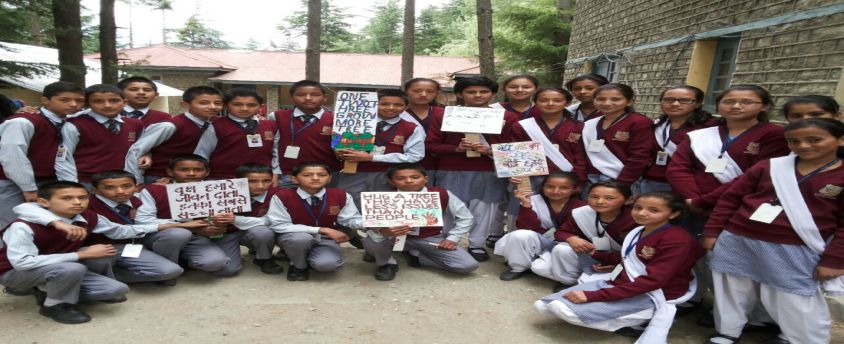
Why in News?
- The government is pushing to set up 740 Eklavya Model Residential Schools (EMRS) for Scheduled Tribe (ST) students.
What are EMRS?
- EMRS is a scheme for making model residential schools for STs across India.
- It started in the year 1997-98.
- Its nodal ministry is Ministry of Tribal Affairs.
- The aim of the scheme to build schools at par with the Jawahar Navodaya Vidyalayas and Kendriya Vidyalayas with focus on special state-of-the-art facilities for preserving local art and culture besides providing training in sports and skill development.
- The EMR School follows the CBSE curriculum.
- In 2018-19, revamping of the EMRS scheme was approved by the Cabinet.
- Since the new guidelines have been put into place, the Ministry of Tribal Affairs sanctioned 332 of the targeted 452 schools till 2021-22.
- As of November 2022, a total of 688 schools have been sanctioned, of which 392 are functional.
- Of the 688, 230 have completed construction and 234 are under construction, with 32 schools still stuck due to land acquisition issues.
What were the Old Guidelines?
- Although the Union government had sanctioned a certain number of preliminary EMRS, the States and Union Territories were responsible for seeking sanction of new schools as and when they needed it.
- The funds for these schools were to come from the grants under Article 275(1) and the guidelines mandated that unless States finished constructing the schools sanctioned by the Centre, they would not be entitled to funds for new ones.
- Apart from the infrastructural requirements of 20-acre plots for each EMRS, the guidelines did not have any criteria of where the EMRS could be set up, leaving it to the discretion of State governments.
What are the New Guidelines?
- The new guidelines in 2018-19 gave the Union government more power to sanction schools and manage them.
- A National Education Society for Tribal Students (NESTS) was set up and entrusted with the management of the State Education Society for Tribal Students (SESTS), which would run the EMRS on the ground.
- The new guidelines set a target of setting up an EMRS in every tribal sub-district and introduced a “population criteria” for setting them up.
- One EMRS will be set-up per sub-district that has at least a 20,000-odd Scheduled Tribe (ST) population, which must be 50% of the total population in that area.
- The minimum land requirement for setting up an EMRS was reduced from 20 acres to 15 acres.
What are the Challenges?
- Requirement of 15-acre Area:
- As per the Standing Committee Report, requirement of 15-acre area is making the identification and acquisition of land troublesome, especially in hilly areas, leftwing extremism-affected areas and the northeast.
- Population Criteria:
- The Standing Committee noted that the population criteria is depriving a scattered tribal population of the benefit of EMRS. Sometimes, when the population criteria are fulfilled, 15-acre plots are not available.
- Shortage of Teachers:
- Despite the setting up of the NESTS, there was a shortage of teachers.
- Though the new guidelines allowed NESTS to suggest measures for teacher recruitment, they never made them mandatory for the States to follow.
- This led to non-uniformity in the quality of teachers, not enough recruitment in reserved positions, and a large number of schools recruiting teachers contractually, in a bid to save on salary expenses.
- As of July 2022, all functional EMRS had a teaching strength of just under 4,000 against the 11,340 recommended by NESTS.
Way Forward:
- Guidelines regarding area of land and population criteria should be relaxed so that the less dense tribal populations can also reap the benefit of EMRS scheme.
- More control of school management should be given to NESTS to overcome the shortage of teachers.
- Also, mandatory guidelines about teacher recruitment must be issued for the States.
The Protection of Children from Sexual Offences (POCSO) Act
09, Nov 2022
Why in News?
- The POCSO Act brings tribals in the Nilgiris into conflict with the law, as youth under the age of 18 in relationships within or outside marriage are subject to the Act’s stringent provisions.
About the News:
- The POCSO Act brings tribals in the Nilgiris into conflict with the law, as youth under the age of 18 in relationships within or outside marriage are subject to the Act’s stringent provisions.
About the Protection of Children from Sexual Offences (POCSO) Act:
- The Union Ministry of Women and Child Development led the introduction of the POCSO Act in 2012.
- The Act was designed to protect children from sexual assault, sexual harassment and pornography offences, as well as to provide for the establishment of Special Courts for the trial of such offences.
- The Act was amended in 2019 for enhancing the punishments for specific offences in order to deter abusers and ensure a dignified childhood.
Salient features:
- A gender-neutral law: The POCSO Act establishes a gender-neutral tone for the legal framework available to child sexual abuse victims by defining a child as “any person” under the age of 18.
- Not reporting abuse is an offence: Any person (except children) in charge of an institution who fails to report the commission of a sexual offence relating to a subordinate is liable to be punished.
- No time limit for reporting abuse: A victim can report an offence at any time, even a number of years after the abuse has been committed.
- Maintaining confidentiality of the victim’s identity: The Act prohibits disclosure of the victim’s identity in any form of media, except when permitted by the special courts established under the act.
New obligations under the POCSO Rules 2020:
- Any institution housing children or coming in regular contact is required to conduct a periodic police verification and background check of every employee.
- Such an institution must impart regular training to sensitise its employees on child safety and protection.
- The institution has to adopt a child protection policy based on the principle of zero tolerance for violence against children.
POCSO Act’s performance in comparison to global standards:
- A 2019 Economist Intelligence Unit report ranked India’s legal system for safeguarding children from sexual abuse and exploitation as the best of the countries surveyed.
- On this metric, India outranked the United Kingdom, Sweden and Australia.
Concerns:
- Despite the existence of such comprehensive child sexual abuse law, the scale of such abuse is staggering.
- According to a recent survey, one in every two children is a victim of sexual abuse in India.
- Furthermore, in the vast majority of cases, the perpetrators are known to the victim, causing the victim to be hesitant to approach authorities for redress.
- Incidents of child abuse have also risen exponentially since the Covid-19 pandemic, with the emergence of new forms of cybercrime.
- The general level of awareness or knowledge on the part of minor girls and boys of the POCSO Act remains severely inadequate in the country.
- Child marriage is common among certain tribal groups in the country, resulting in the criminalisation of 17-18 years old youths due to a lack of knowledge of the POCSO Act.
Way ahead:
- Recently, the Karnataka HC has directed the State Education Department to set up a mechanism for educating students, at least from Class IX onwards about the act and its provisions.
Pradhan Mantri Jan-Aushadhi Yojana
09, Mar 2022

Why in News?
- Janaushadhi Diwas week has been observed from 1st March to 7th March 2022.
About the News:
- Theme of 4th Janaushadhi Diwas: “Jan Aushadhi-Jan Upyogi”
- Pharmaceuticals & Medical Devices Bureau of India (PMBI) is the implementing agency of Pradhan Mantri Bhartiya Janaushadhi Pariyojana (PMBJP).
- All the districts of the country have been covered under the scheme.
- Effective IT-enabled logistics and supply-chain systems for ensuring real-time distribution of medicines at all outlets have also been introduced.
- Product basket of PMBJP presently comprises 1,451 drugs and 240 surgical instruments.
What is National Health Authority (NHA)?
- National Health Authority (NHA) is the apex body responsible for implementing India’s flagship public health insurance/assurance scheme called “Ayushman Bharat Pradhan Mantri Jan Arogya Yojana”.
- It has been entrusted with the role of designing strategy, building technological infrastructure and implementation of “National Digital Health Mission” to create a National Digital Health Eco-system.
- National Health Authority is the successor of the National Health Agency, which was functioning as a registered society since 23rd May, 2018.
- Pursuant to Cabinet decision for full functional autonomy, National Health Agency was reconstituted as the National Health Authority on 2nd January 2019, under Gazette Notification.
- NHA is governed by a Governing Board chaired by the Union Minister for Health and Family Welfare headed by a Chief Executive Officer (CEO), an officer of the rank of Secretary to the Government of India, who manages its affairs. The CEO is the Ex-Office Member Secretary of the Governing Board.
- To implement the scheme at the State level, State Health Agencies (SHAs) in the form of a society/trust have been set up by respective States. SHAs have full operational autonomy over the implementation of the scheme in the State including extending the coverage to non SECC beneficiaries.
- NHA is leading the implementation for national Digital Health Mission NDHM in coordination with different ministries/departments of the Government of India, State Governments, and private sector/civil society organizations.
About Universal Health Coverage:
- The scheme will ensure Universal Health Coverage and focus on providing financial risk protection and ensuring quality and affordable essential health services to all individuals and communities.
- Universal Health Coverage (UHC) includes the full spectrum of essential, quality health services, from health promotion to prevention, treatment, rehabilitation, and palliative care.
- UHC enables everyone to access the services, protecting people from the financial consequences of paying for health services out of their own pockets and reducing the risk that people will be pushed to poverty.
What is Ayushman Bharat PMJAY Yojana?
- The PMJAY, world’s largest health insurance/assurance scheme fully financed by the government, provides a cover of Rs. 5,00,000 per family per year for secondary and tertiary care hospitalisation across public and private empanelled hospitals in India.
- Pre-hospitalisation and Post-hospitalisation expenses such as diagnostics and medicines are also included in the scheme.
- Coverage: Over 10.74 crore poor and vulnerable entitled families (approximately 50 crore beneficiaries) are eligible for these benefits.
- Provides Cashless Access to health care services for the beneficiary at the point of service.
What is its Significance?
- Helps reduce catastrophic expenditure for hospitalizations, which pushes 6 crore people into poverty each year.
- Helps mitigate the financial risk arising out of catastrophic health episodes.
Eligibility Criteria’s:
- No Restrictions on family size, age or gender.
- All pre–existing conditions are covered from day one.
- Covers up to 3 days of pre-hospitalization and 15 days post-hospitalization expenses such as diagnostics and medicines.
- Benefits of the scheme are portable across the country.
- Services include approximately 1,393 procedures covering all the costs related to treatment, including but not limited to drugs, supplies, diagnostic services, physician’s fees, room charges, surgeon charges, OT and ICU charges etc.
- Public hospitals are reimbursed for the healthcare services at par with the private hospitals.
Challenges and Concerns:
- Medical audits have also revealed that private hospitals are more likely to indulge in fraud and abuse than public hospitals and more likely to discharge patients early post-surgery to cut Costs.
- Ensuring the Accountability of Private Hospitals to provide efficient and high-quality care is a pre-eminent challenge for scheme Implementation.
- There is huge State-wise variation in the share of Empanelled private hospitals from less than 25% in most of the north-eastern and hill States to 80% in Maharashtra.
- Private hospitals have fewer beds than public hospitals and are more likely to be empanelled for surgical packages and super-specialties.
Demand for MGNREGA work softens
01, Feb 2022
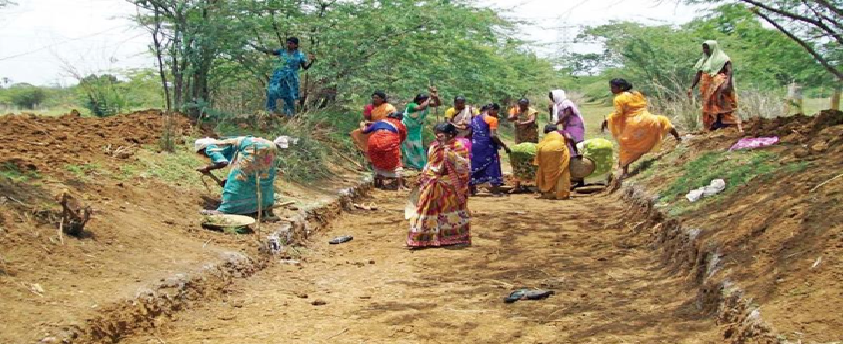
Why in News?
- The Department of Economic Affairs recently said in its annual Economic Survey, that the demand for work under the Mahatma Gandhi National Rural Employment Guarantee Act (MGNREGA) scheme has dropped from the peak of the first lockdown, but is still higher than pre-COVID levels.
About the News:
- However, it cautioned against drawing conclusions about the movement of migrant labour on the basis of MGNREGA employment, noting that the highest demand for work under the scheme was seen in States which are usually the destination of migrant workers, rather than source States.
- Advocates for rural workers argued that the drop in demand is also due to funding constraints, and urged a significant increase in allocations for the scheme in Union budget.
- According to the Survey’s analysis, though demand for work stabilised after the second COVID wave with a maximum of 4.59 crore persons in June 2021, aggregate MGNREGA employment is still higher than pre-pandemic levels of 2019, after accounting for the Seasonality of demand.
What is the Issue Now?
- In 2021-22, additional funding was not available until late in the year when many States had already run out of money, forcing an artificial suppression in demand on the ground.
- For the upcoming 2022-23 financial year, activists have asked for a budget allocation of Rs. 2.6 lakh crore, which would cover the guaranteed 100 days of work for all active job card holders.
- But anything less than Rs. 1.4 lakh crore, which is the amount spent in 2020-21 plus inflation, will be a clear Suppression of Demand by the Government.
Why this Imbalance?
- Intuitively, one may expect that higher MGNREGS demand may be directly related to the movement of migrant labour i.e. source States would be more impacted.
- Nevertheless, State-level analysis shows that for many migrant source States like West Bengal, Madhya Pradesh, Odisha, Bihar, the MGNREGS employment in most months of 2021 has been lower than the corresponding levels in 2020.
- According to the Survey, demand has been higher for migrant recipient States like Punjab, Maharashtra, Karnataka and Tamil Nadu.
- Karnataka, Tamil Nadu and Rajasthan have a record of administrative sensitivity and efficiency with regard to MGNREGA implementation even pre-COVID.
- These States also see high levels of short–term migration within their own borders.
About MGNREGA:
- The scheme was introduced in 2005 as a social measure that guarantees “the right to work”.
- The key tenet of this social measure and labour law is that the local government will have to legally provide at least 100 days of wage employment in rural India to enhance their quality of life.
Key Objectives:
- Generation of paid rural employment of not less than 100 days for each worker who volunteers for unskilled labour.
- Proactively ensuring social inclusion by strengthening the livelihood base of rural poor.
- Creation of durable assets in rural areas such as wells, ponds, roads and canals.
- Reduce urban migration from rural areas.
- Create rural infrastructure by using untapped rural labour.
What are the Eligibility Criteria for receiving the benefits under MGNREGA scheme?
- Must be Citizen of India to seek MGNREGA benefits.
- Job seeker has completed 18 years of age at the time of application.
- The applicant must be part of a local household (i.e. application must be made with local Gram Panchayat).
- Applicants must volunteer for Unskilled Labour.
Implementation of the scheme:
- Within 15 days of submitting the application or from the day work is demanded, wage employment will be provided to the applicant.
- Right to get unemployment allowance in case employment is not provided within fifteen days of submitting the application or from the date when work is sought.
- Social Audit of MGNREGA works is mandatory, which lends to accountability and transparency.
- The Gram Sabha is the principal forum for wage seekers to raise their voices and make demands.
- It is the Gram Sabha and the Gram Panchayat which approves the shelf of works under MGNREGA and fix their priority.
PLI scheme for Textile Sector
31, Dec 2021
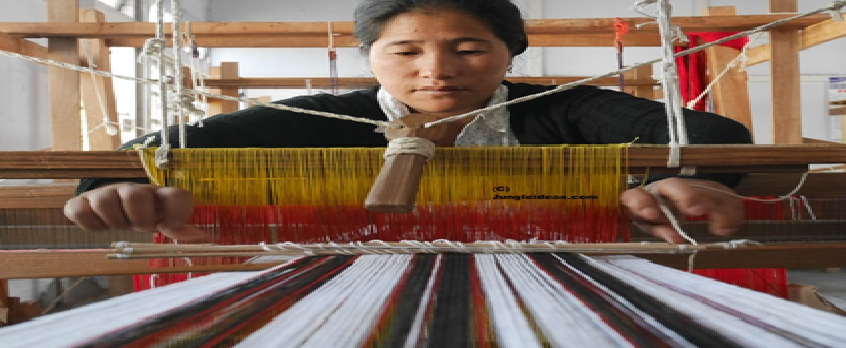
Why in News?
- The Ministry of Textiles has recently said that it will accept applications from January 1 for the Production Linked Scheme for Textiles announced in September this year.
About the News:
- The Union government in September approved production-linked incentive (PLI) for the textile sector with a budgetary outlay of ₹10,683 crore.
- The scheme is for man-made fibre (MMF) apparel, MMF fabrics and 10 segments/products of technical textiles.
- According to an official statement, the incentive structure for the textile sector is designed to Encourage investment in fresh capacities in MMF apparel, MMF fabrics, and 10 segments or products of technical textiles.
- The Scheme Envisages two types of investment with different set of incentive structure. In type one, any person, (which includes firm/company) willing to invest minimum ₹300 crore in Plant, Machinery, and civil works (excluding land and administrative building cost) to produce the notified products will be able to participate in the scheme. In the second type, anyone willing to invest minimum ₹100 crore will be eligible to participate.
- The government has already launched a National Technical Textiles Mission to promote research and development in that sector.
What is its Significance?
- The scheme is expected to attract fresh investment of more than ₹19,000 crore and cumulative turnover of over ₹3 lakh crore will be achieved under this scheme. It will create additional 7.5 lakh jobs in the sector.
- Further, priority will be given for investment in aspirational districts, tier-three, tier-four towns and Rural Areas.
- The scheme will benefit States such as Gujarat, U.P., Maharashtra, Tamil Nadu, Punjab, Andhra Pradesh, Telangana, and Odisha.
About the Textile Sector in India:
- Textiles & Garments industry is labour intensive sector that employs 45 mn people in India and is Second only to the agriculture sector in terms of employment.
- India’s textiles sector is one of the oldest industries in the Indian economy, and is a storehouse and carrier of traditional skills, heritage and culture.
- It can be divided into two segments-
- The unorganised sector is small scale and uses traditional tools and methods. It consists of handloom, handicrafts and sericulture (production of silk).
- The Organised sector uses modern machinery and techniques and consists of the spinning, apparel and Garments Segment.
Significance of the Textiles Sector:
- It contributes 2.3% to Indian Gross Domestic Product, 7% of Industrial Output, 12% to the export earnings of India and employs more than 21% of total employment.
- India is the 6th largest producer of Technical Textiles with 6% Global Share, largest producer of cotton & jute in the world.
- Technical textiles are functional fabrics that have applications across various industries including automobiles, civil engineering and construction, agriculture, healthcare, industrial safety, personal protection etc.
- India is also the second largest producer of silk in the world and 95% of the world’s hand woven fabric comes from India.
About the PLI Scheme:
- The scheme aims to make India a global hub for manufacturing telecom equipment.
- Its eligibility criteria include achievement of a minimum threshold of cumulative incremental investment and incremental sales of manufactured goods.
- The incentive structure ranges between 4% and 7% for different categories and years. Financial year 2019-20 will be treated as the base year for computation of cumulative incremental sales of manufactured goods net of taxes.
- Minimum investment threshold for MSMEs has been kept at Rs 10 crore and for others at Rs 100 Crore.
- Once qualified, the investor will be Incentivised up to 20 times of minimum investment threshold enabling them to utilise their Unused Capacity.
Why is the Production Linked Scheme Needed?
- According to experts, the idea of PLI is important as the government cannot continue making investments in these capital intensive sectors as they need longer times for start giving the Returns.
- Instead, what it can do is to invite global companies with adequate capital to set up capacities in India.
- The kind of ramping up of manufacturing that we need requires across the board Initiatives, but the government can’t spread itself too thin.
- Electronics and pharmaceuticals themselves are large sectors, so, at this point, if the Government can focus on labour intensive sectors like garments and leather, it would be Really helpful.
WORLD BANK APPROVES $ 1 BILLION FOR INDIA TO FIGHT AGAINST COVID-19
16, May 2020

Why in News?
- The Government of India is getting $1 billion loan from the World Bank to support its COVID-19 relief measures and financial assistance for the poorest and most vulnerable communities.
About the News:
- The money will be used for reforms in social security net, making it more integrated, portable and focussed on the urban poor.
- The new support will be funded in two phases. An allocation of $750 million — more than ₹5,600 crore —will be made immediately to help fund the Pradhan Mantri Garib Kalyan Yojana, which the Centre announced in March to scale up cash transfers and free food grain distribution to vulnerable communities, pensioners and poor workers, and provide insurance support to health workers.
- The second phase will provide $250 million — almost ₹1,900 crore —post July, which will fund additional cash and in-kind benefits based on local needs through the State governments and portable social protection delivery systems.
- The COVID-19 pandemic has also put the spotlight on some of the gaps in the existing social protection systems.
- This programme will support the Government of India’s efforts towards a more consolidated delivery platform – accessible to both rural and urban populations across state boundaries.
About Pradhan Mantri Garib Kalyan Yojana:
- The Pradhan Mantri Garib Kalyan Yojana was launched in the year 2016 by PM Narendra Modi along with the other provisions of Taxation Laws (Second Amendment) Act, 2016.
- This scheme was valid from December 16, 2016 to March 31, 2017 and provided an opportunity to declare the unaccounted wealth and black money in a confidential manner and avoid prosecution after paying a fine of 50% on the undisclosed income.
- An additional 25% of the undisclosed income is invested in the scheme which can be refunded after four years, without any interest.
- Due to the outbreak of COVID-19 in India, the Finance Minister announced a ₹7 lakh crore Gareeb Kalyan package to mitigate the loss faced by the poor due to the coronavirus lockdown.
What are its Recent Updates?
- To provide an insurance cover of Rs 50 lakhs per health worker affected by COVID-19.
- To provide free resources of 5 kg wheat or rice and 1 kg of preferred pulses for 80 crore poor people for the next three months under the PM Garib Kalyan Ann Yojana.
- 20 crore Women Jan Dhan account holders will be provided Rs 500 per month for next three months.
- There will be an increase in MGNREGA wage to Rs 202 per day to benefit 13.62 crore families.
- The Central Government has given orders to State Governments to use the Building and Construction Workers Welfare Fund to provide relief to Construction Workers.
What are its Implications?
- The loan would help India move from more than 460 fragmented social protection schemes to an integrated system, which would be faster, more flexible and also acknowledge the diversity of needs across states.
- Geographic portability would be introduced to ensure that social protection benefits could be accessed from anywhere in the country, providing relief to inter-State migrant workers.
- There would also be a shift from the current rural focus of social protection schemes to include the needs of the urban poor as well.
- The platform draws on the country’s existing architecture of safety nets – the PDS, the digital and banking infrastructure, and Aadhaar – while positioning the overall social protection system for the needs of a 21st century India.Importantly, such a system will need to leverage India’s federalism enabling and supporting the States to respond quickly and effectively in their context
PRADHAN MANTRI BHARTIYA JANAUSHADHI PARIYOJANA (PMBJP)
07, May 2020
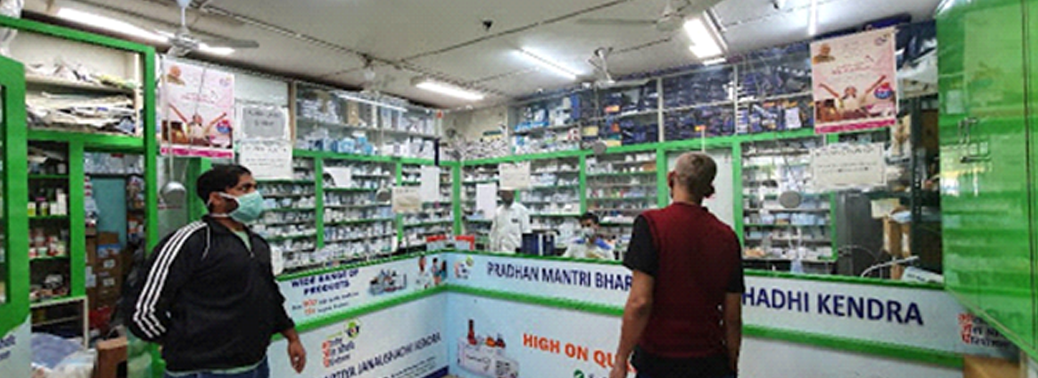
Why in News?
- Pradhan Mantri Bhartiya Janaushadhi Kendras (PMBJKs) are accepting orders on WhatsApp and e-mail and delivering on patient’s doorsteps to facilitate medicine procurement During Lockdown.
About PMBJP:
- ‘Pradhan Mantri Bhartiya Janaushadhi Pariyojana’ is a campaign launched by the Department of Pharmaceuticals, Govt. Of India, to provide quality medicines at affordable prices to the masses through special Kendra’s known as Pradhan Mantri Bhartiya Jan Aushadhi Kendra.
- Bureau of Pharma PSUs of India (BPPI) is the implementing agency of PMBJP. BPPI (Bureau of Pharma Public Sector Undertakings of India) has been established under the Department of Pharmaceuticals, Govt. of India, with the support of all the CPSUs.
What are the Salient Features of the scheme?
- Ensure access to quality medicines.
- Extend coverage of quality generic medicines so as to reduce the out of pocket expenditure on medicines and thereby redefine the unit cost of treatment per person.
- Create awareness about generic medicines through education and publicity so that quality is not synonymous with only high price.
- A public programme involving Government, PSUs, Private Sector, NGO, Societies, Co-operative Bodies and other Institutions.
- Create demand for generic medicines by improving access to better healthcare through low treatment cost and easy availability wherever needed in all therapeutic categories.
What is a Generic Medicine?
- There is no definition of generic or branded medicines under the Drugs & Cosmetics Act, 1940 and Rules, 1945 made thereunder. However, generic medicines are generally those which contain same amount of same active ingredient(s) in same dosage form and are intended to be administered by the same route of administration as that of branded medicine.
- The price of an unbranded generic version of a medicine is generally lower than the price of a corresponding branded medicine because in case of generic version, the pharmaceutical company does not have to spend money on promotion of its brand.
How are they Regulated in India?
- Drugs manufactured in the country, irrespective of whether they are generic or branded, are required to comply with the same standards as prescribed in the Drugs and Cosmetics Act, 1940 and Rules, 1945 made thereunder for their quality.
Outreach of Generic Medicines:
- With developments like more and more doctors prescribing generic medicines and opening of over 5050 Janaushadhi stores across 652 districts, awareness and availability of high quality affordable generic medicines has increased in the country.
- About 10-15 lakh people benefit from Janaushadhi medicines per day and the market share of generic medicines has grown over three fold from 2% to 7%in last 3 years.
- The Janaushadhi medicines have played a big role in bringing down the out of pocket expenditure of patients suffering from life threatening diseases in India.
- The PMBJP scheme has led to total savings of approximately Rs.1000 crores for common citizens, as these medicines are cheaper by 50% to 90% of average market price.
- The PMBJP is also providing a good source of self-employment with self-sustainable and regular earnings.
PM LAUNCHES SWAMITVA YOJANA ON PANCHAYATI RAJ DIWAS
27, Apr 2020

Why in News?
- On Panchayati Raj Diwas (April 24th), the Prime Minister of India launched ‘Swamitva Yojana’ or Ownership Scheme to map residential land ownership in the Rural Sector using Modern Technology like the use of drones.
About Swamitva Yojana:
- The scheme is piloted by the Panchayati Raj ministry that aims to revolutionise property record maintenance in India.
- The residential land in villages will be measured using drones to create a non-disputable record.
- Property card for every property in the village will be prepared by states using accurate measurements delivered by drone-mapping. These cards will be given to property owners and will be Recognised by the Land Revenue Records Department.
What would be the Benefits of the Scheme?
- The delivery of property rights through an official document will enable villagers to access bank finance using their property as collateral.
- The property records for a village will also be maintained at the Panchayat level, allowing for the collection of associated taxes from the owners. The money generated from these local taxes will be used to build rural infrastructure and facilities.
- Freeing the residential properties including land of title disputes and the creation of an official record is likely to result in appreciation in the market value of the properties.
- The accurate property records can be used for facilitating tax collection, new building and structure plan, issuing of permits and for thwarting attempts at Property Grabbing.
What is the Significance of the Scheme?
- The need for this Yojana was felt since several villagers in the rural areas don’t have papers proving ownership of their land.
- In most states, survey and measurement of the populated areas in the villages has not been done for the purpose of attestation/verification of properties.
- The new scheme is likely to become a tool for empowerment and entitlement, reducing social strife on account of discord over properties.
About Panchayati Raj:
- After the Constitution came into force, Article 40 made a mention of Panchayat and Article 246 empowered the state legislature to legislate with respect to any subject relating to local self-government.
- Panchayati Raj Institution (PRI) was constitutionalized through the 73rd Constitutional Amendment Act, 1992 to build democracy at the grass roots level and was entrusted with the task of rural development in the country.
- PRI is a system of rural local self-government in India. Local Self Government is the management of local affairs by such local bodies who have been elected by the local people.
About the 73rd constitutional Amendment:
- The 73rdConstitutional Amendment added Part IX titled “The Panchayats” to the Constitution.
- Basic unit of democratic system-Gram Sabhas (villages) comprising all the adult members registered as voters.
- Three-tier system of panchayats at village, intermediate block/taluk/mandal and district levels except in States with population is below 20 lakhs (Article 243B).
- Seats at all levels to be filled by direct elections Article 243C (2).
- Reservation of Seats:
- Seats reserved for Scheduled Castes (SCs) and Scheduled Tribes (STs) and the chairpersons of the Panchayats at all levels also shall be reserved for SCs and STs in proportion to their population.
- One-third of the total number of seats to be reserved for women.
- One-third offices of chairpersons at all levels reserved for women (Article 243D).
- Uniform Five Year Term and elections to constitute new bodies to be completed before the expiry of the term.
- In the event of dissolution, elections compulsorily within six months (Article 243E).
- Independent Election Commission in each State for superintendence, direction and control of the electoral rolls (Article 243K).
- Panchayats have been authorised to prepare plans for economic development and social justice in respect of subjects illustrated in Eleventh Schedule (Article 243G).
- Source of Revenue (Article 243H):State legislature may authorise the Panchayats with
- Budgetary allocation from State Revenue.
- Share of revenue of certain taxes.
- Collection and retention of the revenue it raises.
- Establish a Finance Commission in each State to determine the principles on the basis of which adequate financial resources would be ensured for panchayats and municipalities (Article 243I).
- The following areas have been exempted from the operation of the Act because of the socio-cultural and administrative considerations:
- Scheduled areas listed under the Schedule V in the states of Andhra Pradesh, Bihar, Gujarat, Himachal Pradesh, Madhya Pradesh, Maharashtra, Orissa and Rajasthan.
- The states of Nagaland, Meghalaya and Mizoram.
- The hill areas of the district of Darjeeling in the state of West Bengal for which Darjeeling Gorkha Hill Council exists.
- However, an Act called the Provisions of Panchayats (Extension to the Scheduled Areas) Act, 1996 passed by the Government of India for the mentioned scheduled areas.
PAYMENT OF MGNREGS IN FOODGRAINS
24, Apr 2020
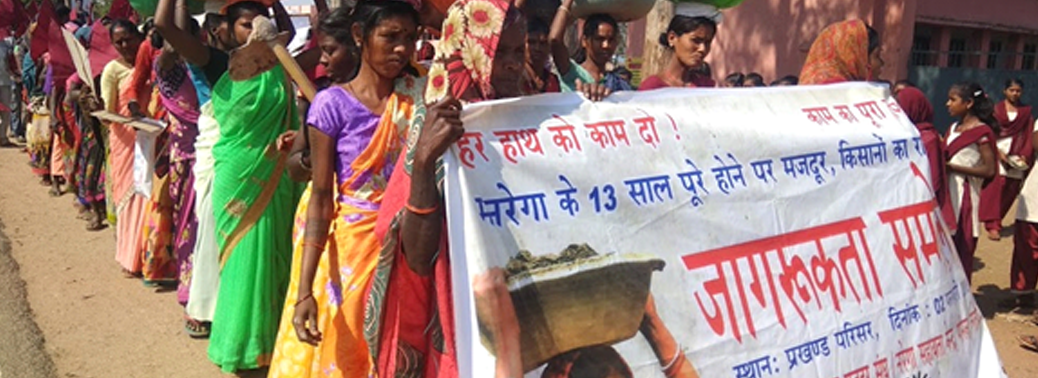
Why in News?
- Chhattisgarh Chief Minister Bhupesh Baghel in a letter to Union Rural Development Minister Narendra Singh Tomar has asked the Centre to allow payment of the MGNREGA wages in the form of Foodgrains.
What is the reason for Chhattisgarh’s demand?
- The Chief Minister proposed that handing the workers foodgrains directly is better due to the lockdown and the continuing scare of the COVID-19.
- “Once we credit the MGNREGA wages, the worker will have to go to the banks to withdraw the money. This would not only be a bother but also could jeopardise social distancing norms.”
- Chhattisgarh does not have many bank branches and faces the problem of Internet connectivity in Naxal-affected areas. “Due to this, there are often problems like link failure and workers have to contact the branch many times to withdraw the amount,” he wrote in his letter.
What is the Concern?
- There are many concerns about making payments through foodgrains like at what rate the grains would be charged. Will the government make the payments based on the PDS or the FCI rates.
- The other concern is that the pay-outs during the pandemic should not exhaust the 100-day entitlement.
- These payments via food grains should not eat into the 100-day entitlement per family. Because they will need employment even after this pandemic subsides.
- If accessibility to banks is a problem, then the government must make timely cash payments in a public place.
About MGNREGA:
- The scheme was introduced as a social measure that guarantees “the right to work”.
- The key tenet of this social measure and labour law is that the local government will have to legally provide at least 100 days of wage employment in rural India to enhance their quality of life.
Key Objectives of the Scheme:
- Generation of paid rural employment of not less than 100 days for each worker who volunteers for unskilled labour.
- Proactively ensuring social inclusion by strengthening livelihood base of rural poor.
- Creation of durable assets in rural areas such as wells, ponds, roads and canals.
- Reduce urban migration from rural areas.
- Create rural infrastructure by using untapped rural labour.
Eligibility criteria for receiving the benefits under MGNREGA scheme:
- Must be Citizen of India to seek NREGA benefits.
- Job seeker has completed 18 years of age at the time of application.
- The applicant must be part of a local household (i.e. application must be made with local Gram Panchayat).
- Applicant must volunteer for unskilled labour.
What are the other Key Facts Related to the Scheme?
- The Ministry of Rural Development (MRD), Government of India is monitoring the entire implementation of this scheme in association with state governments.
- Individual beneficiary oriented works can be taken up on the cards of Scheduled Castes and Scheduled Tribes, small or marginal farmers or beneficiaries of land reforms or beneficiaries under the Indira Awaas Yojana of the Government of India.
- Within 15 days of submitting the application or from the day work is demanded, wage employment will be provided to the applicant.
- Right to get unemployment allowance in case employment is not provided within fifteen days of submitting the application or from the date when work is sought.
- Social Audit of MGNREGA works is mandatory, which lends to accountability and transparency.
- The Gram Sabha is the principal forum for wage seekers to raise their voices and make demands.
- It is the Gram Sabha and the Gram Panchayat which approves the shelf of works under MGNREGA and fixes their priority.
What is the Role of Gram Sabha?
- It determines the order of priority of works in the meetings of the Gram Sabha keeping in view potential of the local area, its needs, and local resources.
- Monitor the execution of works within the GP.
What are the Roles of Gram Panchayat?
- Receiving applications for registration
- Verifying registration applications
- Registering households
- Issuing Job Cards (JCs)
- Receiving applications for work
- Issuing dated receipts for these applications for work
- Allotting work within fifteen days of submitting the application or from the date when work is sought in the case of an advance application.
- Identification and planning of works, developing shelf of projects including determination of the order of their priority.
What are the Responsibilities of State Government in MGNREGA?
- Frame Rules on matters pertaining to State responsibilities under Section 32 of the Act and to Develop and notify the Rural Employment Guarantee Scheme for the State.
- Set up the State Employment Guarantee Council (SEGC).
- Set up a State level MGNREGA implementation agency/ mission with adequate number of high calibre professionals.
- Set up a State level MGNREGA social audit agency/directorate with adequate number of people with knowledge on MGNREGA processes and demonstrated commitment to social audit.
- Establish and operate a State Employment Guarantee Fund (SEGF).
SOVEREIGN GOLD BONDS
18, Apr 2020
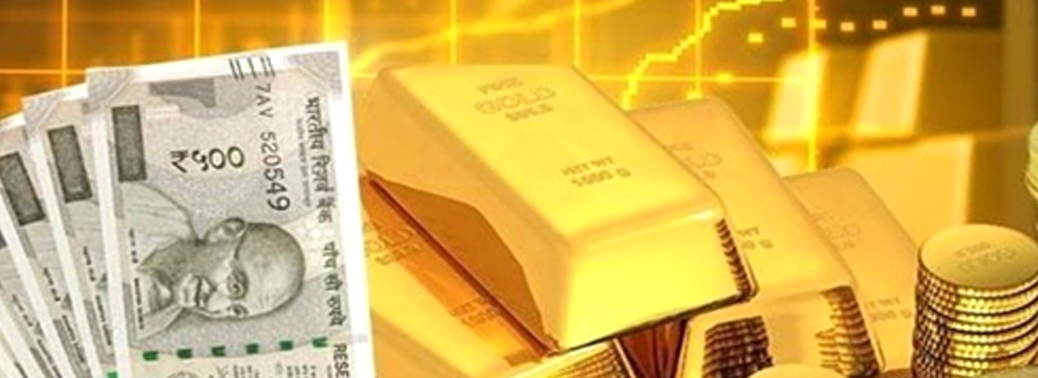
Why in News?
- Recently, Reserve Bank of India (RBI) has decided to issue Sovereign Gold Bonds (SGBs) in six instalments, from April 2020 to September 2020.
About Sovereign Gold Bonds:
- They are government securities denominated in grams of gold. They are substitutes for holding physical gold.
- Its objective is to reduce the demand for physical gold and shift a part of the domestic savings (used for the purchase of gold) into financial savings.
- The Investors have to pay the issue price in cash and the bonds will be redeemed (bought back by the issuer) in cash on maturity. Issue price is the price at which bonds are offered for sale when they first become available to the public.
- The investor gets a fixed rate of interest on the investment amount throughout the tenure of the fund.
- The government will pay an interest at the rate of 2.5% per annum. The interest is payable semi-annually.
- It has a tenure of eight years, with exit options are available from the fifth year.
- It will be restricted for sale to resident individuals, Hindu Undivided Families (HUFs), Trusts, Universities and Charitable Institutions.
- Its minimum Permissible Investment Unit is 1 Gram of Gold.
How to Buy this Bonds?
- It can be bought through designated scheduled commercial banks (except Small Finance Banks and Payment Banks), Stock Holding Corporation of India Limited, and designated post offices.
- We can also buy these bonds through National Stock Exchange of India Limited and Bombay Stock Exchange(BSE) Limited.
Advantages of the Gold Bond:
- It is advisable to invest in gold for portfolio diversification.
- It is considered one of the better ways of investing in gold as along with capital appreciation an investor gets a fixed rate of interest.
- It is tax efficient as no capital gains is charged in case of redemption on maturity.
- It a good way to ensure an investment that does not need physical storage of Gold.
Disadvantages of the Gold Bonds
- In long term investment unlike physical gold which can be sold immediately.
- It is listed on exchange but the trading volumes are not high, therefore it will be difficult to exit before Maturity.
PRADHAN MANTRI JAN AROGYA (PM-JAY)
14, Apr 2020

Context:
- Recently, the National Health Authority has launched an express empanelment process called Hospital Empanelment Module (HEM) Lite to bring a large number of private hospitals under Ayushman Bharat Pradhan Mantri Jan Arogya Yojana (AB PM-JAY).
Highlights:
- With the launch of express empanelment process, patients suffering from serious illnesses, such as cancer, cardiac issues and diabetes that require continuous treatment, will be able to continue getting inpatient services without the fear of contracting the Covid -19 infection.
- Hospitals can empanel themselves for a temporary period of 3 months through a simpler, user friendly online system available on the scheme’s website pmjay.gov.in.
- Using the HEM Lite process, the system has been built in a way to ensure that the rest of the process of approvals by concerned authorities is expeditious.
- The hospitals have the choice whether to provide regular treatment for serious illnesses such as cancer and cardiac illnesses under the scheme or convert themselves into covid-19 only hospitals providing dedicated testing and treatment to covid-19 patients.
- The government recently decided to bring testing and treatment of covid-19 under AB PM-JAY scheme.
About Pradhan Mantri Jan Arogya (PM-JAY):
- It offers a sum insured of Rs.5 lakhs per family for secondary care (which doesn’t involve a super specialist) as well as tertiary care (which does).
- It is an entitlement-based scheme that targets the beneficiaries as identified by latest Socio-Economic Caste Census (SECC) data. Once identified by the database, the beneficiary is considered insured and can walk into any empanelled hospital.
- The insurance cost is shared by the centre and the state mostly in the ratio of 60:40.
- Empanelled hospitals agree to the packaged rates under PM-JAY—there are about 1,400 packaged rates for various medical procedures under the scheme.
- It also has prescribed a daily limit for medical management.
Significance of PM_JAY:
- It will be cashless and largely paperless. The poor and vulnerable stand to benefit from the scheme.
- It will be an enabler of quality, affordability and accountability in the health system.
- Ayushman Bharat is expected to advance India’s pursuit of universal health coverage (UHC).
- This will ensure all people can access quality health services when and where they need them,without suffering financial hardship, which is also one of the WHO South-East Asia Region’s Flagship
- From the day PMJAY was launched, almost half of all eligible families are now covered for hospital
- Another impact of the PMJAY will be rationalisation of the cost of care in the private sector.The scheme will create lakhs of jobs for professionals and non-professionals — especially women.
About State Health Agency (SHA)
- It is the apex body of the State Government responsible for the implementation of AB PM-JAY in the State.It will sign an MoU with express empanelled hospital for three months only. It can continue with the empanelment on mutual agreement between hospital and SHA after this period, but only after the detailed empanelment process is followed i.e. hospital has filled the entire form and District Implementation Unit (DIU) and SHA have verified the details, etc.
- These packaged rates also mention the number of average days of hospitalization for a medical procedure and supporting documents that are needed.
- These rates are flexible, but once fixed hospitals can’t change it and under no circumstances can they charge the beneficiary.
- The National Health Agency has been constituted as an autonomous entity under the Society Registration Act, 1860 for effective implementation of PM-JAY in alliance with state governments.
Way Forward:
- There is a Need for real-time monitoring of implementation. This will allow problems to be detected early on, thereby enhancing accountability, as well as facilitating course corrections where necessary.
- Money must be spent wisely. The investment in frontline services is cost-effective. This must be backed up by effective and affordable hospital care. Special attention is needed to build confidence in and demand for the country’s primary care services.
ELECTRONIC MANUFACTURING SCHEME
03, Apr 2020
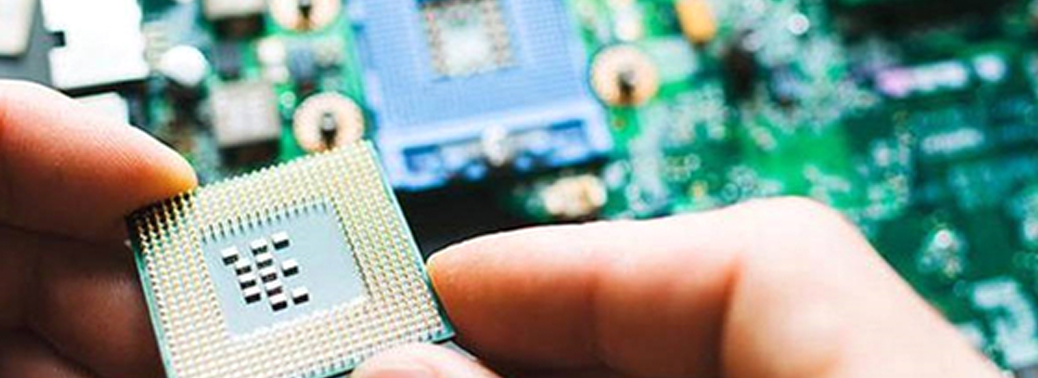
Why in News:
- The government has recently notified three Electronic Manufacturing Scheme involving total incentives of around Rs 48,000 crore for Electronics Manufacturing.
About:
- The Three Schemes are
- The Production Linked Incentive Scheme (PLI) for large scale electronics manufacturing.
- The scheme for Promotion of Manufacturing of Electronic Components and Semiconductors (SPECS).
- The modified Electronics Manufacturing Clusters (EMC 2.0) Scheme.
- They are expected to attract Rs 1 lakh crore investment in the sector, Boost local electronics manufacturing and generate manufacturing revenue potential of Rs 10 lakh crore by 2025 and create 20 lakh direct and indirect jobs by 2025.
About Production Linked Incentive Scheme (PLI) for Large Scale Electronics Manufacturing:
- It proposes a financial incentive to boost domestic manufacturing and attract large investments in the electronics value chain including electronic components and semiconductor packaging.
- It will get an incentive of 4 to 6% to electronic manufacturing companies on incremental sales (over base year) of goods manufactured in India and covered under target segments, to eligible companies over a period of next 5 years.
- It shall only be applicable for target segments namely mobile phones and specified electronic components.
- The production of mobile phones in the country has surged eight-times in the last four years.
About the Scheme for Promotion of Manufacturing of Electronic Components and Semiconductors:
- It is notified for manufacturing of electronics components and semiconductors has a budget outlay of Rs 3,285 crore spread over a period of eight years.
- Under the scheme, a financial incentive of 25% of capital expenditure has been approved by the Union Cabinet for the manufacturing of goods that constitute the supply chain of an electronic product.
- It is estimated by the government that the push for manufacturing of electronics components and electronic chips will create around 6 lakh direct and Indirect Jobs.
About Modified Electronics Manufacturing Clusters 2.0 Scheme:
- It has a total incentive outlay of Rs 3,762.25 crore spread over a period of 8 years with an objective to create 10 lakh direct and indirect jobs under the scheme.
- It will provide financial assistance up to 50% of the project cost subject to a ceiling of Rs 70 crore per 100 acres of land for setting up of Electronics Manufacturing Cluster projects.
- Under the scheme, the Electronic manufacturing clusters to be set up will be spread in an area of 200 acres across India and 100 acres in North East part of the country.
WAYS AND MEANS ADVANCE SCHEME
02, Apr 2020

Why in News?
- The Government has recently hiked Ways and Means Advance (WMA) limit with the Reserve Bank of India (RBI) by 60%.
Highlights:
- The government has announced a Rs 1.7 lakh crore package (Pradhan Mantri Garib Kalyan Yojana) to provide income support, free food and other facilities to the poor to help them during the 21-day national lockdown.
- The fundraising resources are not only from the market, but also from institutions such as the RBI.
- The 2020-21 budget has pegged the Centre’s net market borrowing, including government securities, treasury bills and post office life insurance fund.
- In FY21, the Centre also plans to issue the Debt Exchange Traded Fund comprising government securities to widen the base of investors.
- This will enable retail investors, who otherwise find it difficult to buy government bonds directly, take an exposure in this risk free instrument.
About Ways and means Advance scheme:
- It was introduced in 1997 to meet mismatches in the receipts and payments of the government.
- The government can avail of immediate cash from the RBI, if required. But it has to return the amount within 90 days. Interest is charged at the existing repo rate.
- If exceeds 90 days, it would be treated as an overdraft (the interest rate on overdrafts is 2 percentage points more than the repo rate).
- Its limits are decided by the government and RBI mutually and revised periodically. A higher limit provides the government flexibility to raise funds from RBI without borrowing them from the market.
- There are two types of Ways and Means Advances, Special WMA and Normal WMA
- Special WMA or Special Drawing Facility is provided against the collateral of the government securities held by the state. After the state has exhausted the limit of SDF, it gets normal WMA. The interest rate for SDF is one percentage point less than the repo rate.
- The loans Normal WMA is based on a three-year average of actual revenue and capital expenditure of the state.
About Exchange Traded Fund:
- It is a basket of securities that trade on an exchange, just like a stock.
- It reflects the composition of an Index, like BSE Sensex. Its trading value is based on the Net Asset Value (NAV) of the underlying stocks (such as shares) that it represents.
- It shares prices fluctuate all day as it is bought and sold. This is different from mutual funds that only trade once a day after the market closes.
- It can own hundreds or thousands of stocks across various industries, or it could be isolated to one particular industry or sector.
COMPANIES FRESH START SCHEME, 2020
01, Apr 2020

Why in News?
- Ministry of Corporate Affairs introduces the “Companies Fresh Start Scheme, 2020” and revised the “LLP Settlement Scheme, 2020” to provide relief to law abiding companies and Limited Liability Partnerships (LLPs) in the wake of COVID 19.
What do these Schemes Entail?
- These schemes incentivise compliance and reduce compliance burden during the unprecedented public health situation caused by COVID-19.
- The schemes provide a one-time waiver of additional filing fees for delayed filings by the companies or LLPs with the Registrar of Companies during the currency of the Schemes, i.e. during the period starting from 1stApril, 2020 and ending on 30th September, 2020.
- They also significantly reduce the related financial burden on them, especially for those with long standing defaults, thereby giving them an opportunity to make a “fresh start”.
- Both the Schemes also contain provision for giving immunity from penal proceedings, including against imposition of penalties for late submissions.
- They also provide additional time for filing appeals before the concerned Regional Directors against imposition of penalties, if already imposed.
What is a LLP?
- A Limited Liability Partnership (LLP) is a partnership in which some or all partners have limited liability. It therefore exhibits elements of partnerships and corporations.
- In an LLP, one partner is not responsible or liable for another partner’s misconduct or negligence.
Salient features of an LLP:
- An LLP is a body corporate and legal entity separate from its partners. It has perpetual Succession.
- Being the separate legislation (i.e. LLP Act, 2008), the provisions of Indian Partnership Act, 1932 are not applicable to an LLP and it is regulated by the contractual agreement between the partners.
- Every Limited Liability Partnership shall use the words “Limited Liability Partnership” or its acronym “LLP” as the last words of its Name.
Composition:
- Every LLP shall have at least two designated partners being individuals, at least one of them being resident in India and all the partners shall be the agent of the Limited Liability Partnership but not of other partners.
Need for and significance LLP:
- LLP format is an alternative corporate business vehicle that provides the benefits of limited liability of a company but allows its members the flexibility of organizing their internal management on the basis of a mutually arrived agreement, as is the case in a partnership firm.
- This format would be quite useful for small and medium enterprises in general and for the enterprises in services sector in particular.
- Internationally, LLPs are the preferred vehicle of business particularly for service industry or for activities involving professionals.
MSP FOR MINOR FOREST PRODUCE
27, Mar 2020
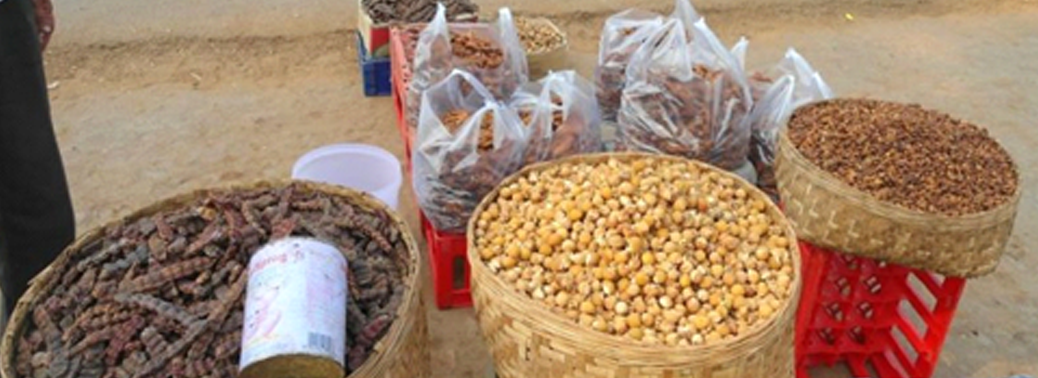
Why in News?
- According to experts, the Union government’s ‘mechanism for marketing of minor forest produce (MFP) through minimum support price (MSP) and development of value chain for MFP’ scheme can offer respite to forest-dependent labourers in the wake of novel coronavirus (COVID-19) outbreak.
About the Scheme:
- The Union Cabinet, in 2013, approved a Centrally Sponsored Scheme for marketing of non-nationalized / non monopolized Minor Forest Produce (MFP) and development of a value chain for MFP through Minimum Support Price (MSP).
- This was a measure towards social safety for MFP gatherers, who are primarily members of the Scheduled Tribes (STs) most of them in Left Wing Extremism (LWE) areas.
- The scheme had Rs. 967.28 crore as Central Government share and Rs. 249.50 crore as the States share for the current Plan period.
Key Features of the Scheme:
- Ensure that the tribal population gets a remunerative price for the produce they collect from the forest and provide alternative employment avenues to them.
- Establish a system to ensure fair monetary returns for forest dweller’s efforts in collection, primary processing, storage, packaging, transportation etc., while ensuring sustainability of the resource base.
- Get them a share of revenue from the sales proceeds with costs deducted.
Coverage of the Scheme:
- Earlier, the scheme was extended only to Scheduled Areas in eight states and fixed MSPs for 12 MFPs. Later expanded to all states and UTs.
- Total number of MFPs covered under the list includes 49.
- Implementation: The responsibility of purchasing MFP on MSP will be with State designated agencies.
- To ascertain market price, services of market correspondents would be availed by the designated agencies particularly for major markets trading in MFP.
- The scheme supports primary value addition as well as provides for supply chain infrastructure like cold storage, warehouses etc.
- The Ministry of Tribal Affairs will be the nodal Ministry for implementation and monitoring of the scheme. The Minimum Support Price would be determined by the Ministry with technical help of
What are the Significances of the Scheme?
- The Minor Forest Produce (MFP), also known as Non-Timber Forest Produce (NTFP), is a major source of livelihood and provides essential food, nutrition, medicinal needs and cash income to a large number of STs who live in and around forests. An estimated 100 million forest dwellers depend on the Minor Forest Produce for food, shelter, medicines, cash income, etc.
- However, MFP production is highly dispersed spatially because of the poor accessibility of these areas and competitive market not having evolved. Consequently, MFP gatherers who are mostly poor are unable to bargain for fair prices. This package of intervention can help in organizing unstructured MFP markets.
UNNAT BHARAT ABHIYAN
17, Mar 2020
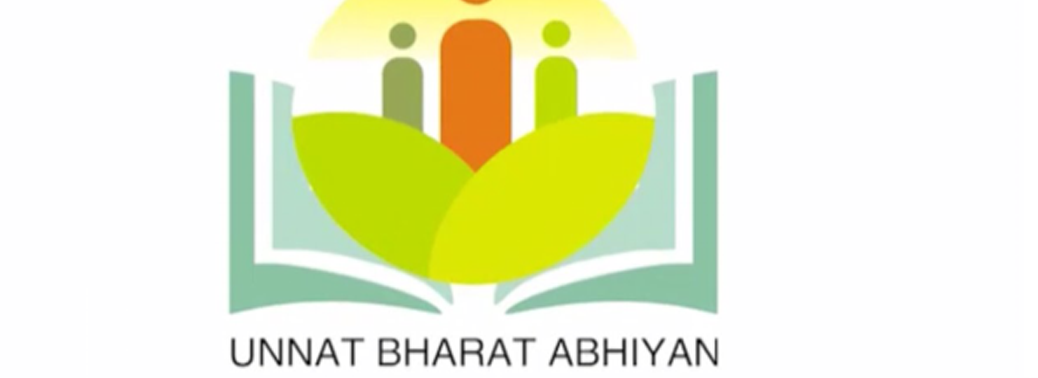
Why in News?
- Ministry for Human Resource Development (MHRD) has submitted the information related to the Unnat Bharat Abhiyan (UBA) recently.
Unnat Bharat Abhiyan (UBA):
- It is a flagship program of the Ministry for Human Resource Development (MHRD).
- It aims to link the Higher Education Institutions with a set of at least (5) village, so that these institutions can contribute to the economic and social betterment of these village communities using their knowledge base.
Objectives of the Scheme:
- To engage the faculty and students of Higher Educational Institutions (HEIs) in identifying development issues in rural areas and finding sustainable solutions for the same.
- Identify & select existing innovative technologies, enable customisation of technologies, or devise implementation methods for innovative solutions, as required by the people.
- To allow HEIs to contribute to devising systems for smooth implementation of various Government programmes.
About Unnat Bharat Abhiyan 2.0:
- It is the upgraded version of Unnat Bharat Abhiyan 1.0 launched in the year 2018.
- The scheme used to be extended to all educational institutes. But under Unnat Bharat Abhiyan 2.0 participating institutes are selected based on the fulfilment of certain criteria.
- The technological interventions under the UBA cover different subjects broadly categorized like in the area of sustainable agriculture; water resource management; artisans, industries and livelihood; basic amenities (Infrastructure & Services) and Rural Energy System.
STATUS OF GOVERNMENT SCHOOLS IN INDIA
10, Mar 2020
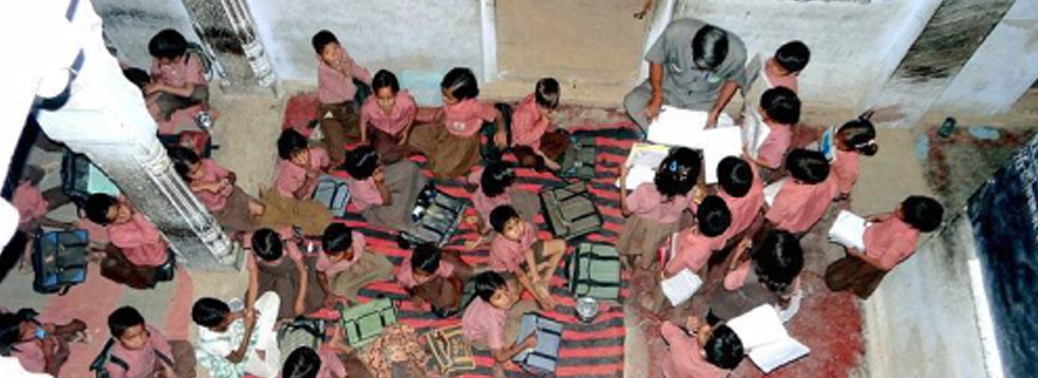
Why in News?
- The Parliamentary Standing Committee on Human Resource Development (HRD) recently submitted its report on the 2020-2021 demand for grants for school education to the Rajya Sabha and has made various observations on state of government schools in India.
What are the Key Findings?
- Almost half the government schools in the country do not have electricity or playgrounds.
- The budgetary allocations saw a 27% cut from proposals made by the School Education Department, despite proposals for 82,570 crore, only Rs. 59,845 crore was allocated.
- There is slow progress in building classrooms, labs and libraries to strengthen government higher secondary schools.
- Overall, for the core Samagra Shiksha Scheme, the department had only spent 71% of revised estimates by December 31, 2019.
- India is also dealing with a scenario of significant teacher vacancies, which are to the tune of almost 60-70 per cent in some states.

About Samagra Shiksha Abhiyan:
- Samagra Shiksha is an integrated scheme for school education extending from pre-school to class XII to ensure inclusive and equitable quality education at all levels of school education.
- It subsumes the three Schemes of Sarva Shiksha Abhiyan (SSA), Rashtriya Madhyamik Shiksha Abhiyan (RMSA) and Teacher Education (TE).
- The scheme treats school education holistically as a continuum from Pre-school to Class 12.
- The main emphasis of the Scheme is on improving the quality of school education by focussing on the two T’s – Teacher and Technology.
What are its Key Recommendations?
- Core schemes should get additional funds at the revised estimates stage.
- HRD Ministry should collaborate with the Mahatma Gandhi National Rural Employment Guarantee Scheme to construct boundary walls.
- It should also work with the Ministry of New and Renewable Energy to provide solar and other energy sources so that schools have access to power.
What is the Concern?
- The learning crisis is evident in the fact that almost half of the children in grade 5 in rural India cannot solve a simple two-digit subtraction problem, while 67 per cent of children in grade 8 in public schools score less than 50 per cent in competency-based assessments in mathematics.
Need of an Hour:
- The Delhi Model of Education:
- For too long, there have been two kinds of education models in the country: one for the classes and another for the masses. The AAP government in Delhi sought to bridge this gap.
- Its approach stems from the belief that quality education is a necessity, not a luxury. Hence, it built a model which essentially has five major components and is supported by nearly 25% of the State Budget.
- Key components of the model:
1. Transformation of school infrastructure.
2. Training of teachers and principals.
3. Engaging with the community by reconstituting school management committees (SMC).
4. Curricular reforms in teaching learning.
5. No fee increase in private schools.
DISABILITY PENSION
07, Mar 2020
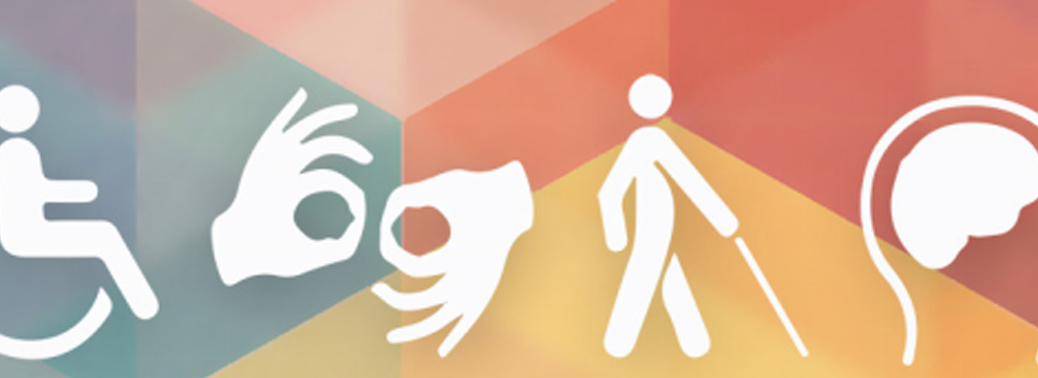
Why in News?
- Recently, the government has withdrawn a circular, that had directed banks to deduct income tax on pension and disability benefits provided to disabled retired military personnel.
About Categories of Disabled Veterans:
- They are classified under three categories: battle casualties (war wounded), battle casualties and disabilities due to service conditions.
- The military personnel who have been disabled due to wounds or injuries suffered by them in operations with the enemy or terrorists/ insurgents or suchlike operations are battle casualties (war wounded), while personnel who have been declared battle casualties but have not suffered injuries due to physical wounds are classified under battle casualties.
- The third category pertains to personnel who have been disabled due to conditions of service, wherein some of the disabilities akin to lifestyle diseases are also included.
Benefits are based on the Percentage of Disability:
- Less than 20% disability is not entitled to any benefits.
- Those with disability from 21% to 50% are categorised as 50% disabled,
- Those with 51% to 75% disability are classified as 75% disabled, and
- Those with 76% or more disability are classified as 100% disabled.
- The Amount of disability pension is based on two categories
The first rate is for battle casualties (war wounded) and battle casualties:
- For 21% to 50% disability, 30% of the last pay drawn is given as disability pension;
- for 51% to 75% disability, 45% of the last pay; and
- for 76% of more disability, 60% of last pay drawn on retirement is given as disability pension.
The second rate applies to personnel with disabilities due to service conditions:
- For 21% to 50% disability, 15% of the last pay drawn is the disability pension;
- for 51% to 75% disability, 22.5% of the last pay; and for 76% of more disability,
- 30% of the last pay drawn on retirement is given as disability pension.
Are These Disability Pensions Tax-Free?
- The entire pension and disability element of pension in all the categories is exempt from payment of income tax.
- But the Central Board of Direct Taxes (CBDT) notified that tax exemption on disability pension would be available only to personnel who had been invalidated from service and not to personnel who had retired otherwise.
- This has been challenged in the Supreme Court which, in an order dated August, 2019, directed all parties to maintain ‘status quo’ on the matter.
About Central Board of Direct Taxes (CBDT):
- It is a statutory body established as per the Central Board of Revenue Act, 1963.
- It is India’s official financial action task force unit.
- It is administered by the Department of Revenue under the Ministry of Finance.
About CBDT Structure:
- The Central Board of Direct Taxes consists of a Chairman and six members that deal with the following:
1.Income Tax
2.Revenue
3.Legislation and Computerisation
4.Audit and Judicial
5.Investigation
6.Personnel and Vigilance
- The Members of the CBDT are selected from the Indian Revenue Service (IRS). The members constitute the top management of the Income Tax Department.
Functions of CBDT:
- It deals with matters related to levying and collecting Direct Taxes.
- Formulation of various policies.
- Supervision of the entire Income Tax Department
- Suggests legislative changes in Direct Tax Enactments
- Suggests changes in tax rates
- Proposes changes in the taxation structure in line with the Government policies.
Current Controversy:
- The Principal Controller of Defence Accounts, Allahabad issued a circular on February 20, for “necessary action” on the June 2019 CBDT notification to deduct income tax from pensions of disabled soldiers.
- The State Bank of India then started debiting tax at source for the entire financial year 2019-20 from the February pension of retired military personnel who were receiving disability pension. This led to several pensioners receiving as little as Rs 1000 in their accounts.
ONE IN THREE PAYMENTS FOR MATERNITY BENEFIT SCHEME CREDITED TO WRONG ACCOUNT
24, Feb 2020
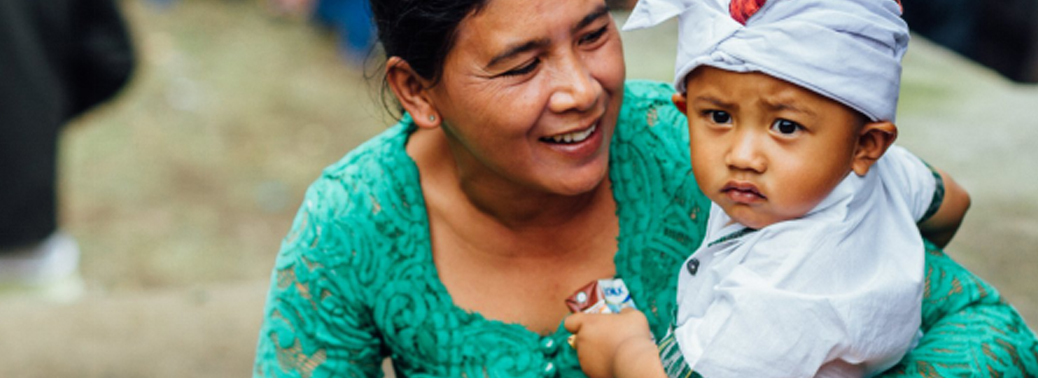
Why in News?
- The progress report on Poshan Abhiyan released by Niti Aayog recently has flagged the failure of Aadhaar-based payments under Pradhan Mantri Matru Vandana Yojana.
Issues Highlighted by the Report:
1. Faulty Payment System
- Only 66% of pregnant and lactating mothers under PMMVY are getting the benefits from Aadhaar-based payment system.
- Out of that, about 28% of total Aadhaar-based DBT towards Pradhan Mantri Matru Vandana Yojana was credited to a Wrong Bank Account.
2. Delay in Payment:
- According to the report a huge number of beneficiaries had not received the Cash Incentive since 2 years.
- This was as a result of red tapism that has been so vividly entrenched across data entry operators at taluk-level offices who has to update the data.
3. Cumbersome Application
- Besides it is said that the application form required to be filled up for availing the benefits under the scheme is too long and cumbersome (32 pages).
About Poshan Abhiyaan:
- POSHAN Abhiyaan (National Nutrition Mission) was launched by the government in 2018.
- The Abhiyaan targets to reduce stunting, undernutrition, anemia and low birth weight by 2%, 2%, 3% and 2% per annum respectively.
- Mission 25:The target of the mission is to bring down stunting among children in the age group 0-6 years from 38.4% to 25% by 2022.
- POSHAN Abhiyaan aims to ensure service delivery and interventions by use of technology, behavioural change through convergence and lays-down specific targets to be achieved across different monitoring parameters.
- Under the Abhiyaan, Swasth Bharat Preraks will be deployed one in each district for coordinating with district officials and enabling fast and efficient execution of the Abhiyaan across the country. Swasth Bharat Preraks would function as catalyst for fast tracking the implementation of the Abhiyaan.
About Pradhan Mantri Matru Vandana Yojana:
- Pradhan Mantri Matru Vandana Yojana (PMMVY) is a maternity benefit programme being implemented in all districts of the country from 2017.
- It is a centrally sponsored scheme being executed by the Ministry of Women and Child Development.
- Direct Benefit Transfer Scheme: Cash benefits are provided to pregnant women in their bank account directly to meet enhanced nutritional needs and partially compensate for wage loss.
Target Beneficiaries:
- All Pregnant Women and Lactating Mothers (PW&LM), excluding those who are in regular employment with the Central Government or the State Governments or PSUs or those who are in receipt of similar benefits under any law for the time being in force.
- All eligible Pregnant Women and Lactating Mothers who have their pregnancy for the first child in the family.
Benefits under the Scheme:
- Under PMMMY cash incentive of Rs 5000 is provided to pregnant and lactating mothers in three installments.
- 1stinstallment of Rs 1000/ – on early registration of pregnancy at the Anganwadi Centre
- 2ndinstallment of Rs 2000/ – after six months of pregnancy on receiving at least one ante-natal check-up (ANC)
- 3rdinstallment of Rs 2000/ – after child birth is registered and the child has received the first cycle of BCG, OPV, DPT and Hepatitis – B, or its equivalent/ substitute.
- The eligible beneficiaries also receive cash incentive under Janani Suraksha Yojana (JSY). Thus, on an average, a woman gets Rs. 6,000.
Distinctive Feature:
- Implementation of the scheme is closely monitored by the central and state governments through the Pradhan Mantri Matru Vandana Yojana – Common Application Software (PMMVY-CAS).
- PMMVY-CAS is a web based software application that enables tracking the status of each beneficiary under the scheme, resulting in expedited, accountable and better grievance redressal.
ENSURING WATER SECURITY
25, Jan 2020

Context:
- Recently, the operational guidelines for Jal Jeevan Mission (JJM) has been released. The initiative aims to provide Functional Household Tap Connections (FHTC), to every rural household i.e., ‘Har Ghar Nal Se Jal’ by 2024.
What is the status of household water connections in India?
- Out of 17.87 crore rural households in the country, about 81.67% households are yet to have tap connections for water.
- As the National Sample Survey Office’s (NSSO) 76th round in rural India, just 11.3 per cent of the rural households receive potable water directly at homes.
- In urban India, 40.9 per cent households have piped water connections.
- Around 58.3 per cent of households still rely on hand pump, tube well, public tap, piped water from neighbour, protected or unprotected well, and private or public taps.
What is Jal Jeevan Mission?
- JJM focuses on integrated demand and supply-side management of water at the local level.
- It includes creation of local infrastructure for source sustainability like rainwater harvesting, groundwater recharge and management of household wastewater for reuse.
- Waterbeing a subject mentioned in the State List, the guidelines for the scheme were formed by the Centre in close consultation with the state governments.
Works to be undertaken under JJM:
- Piped Water Supply infrastructure for tap water connection to every household
- Reliable drinking water source development/augmentation of existing sources
- Transfer of water between villages
- Technological intervention for water treatment to make water potable
- Greywater(Any domestic wastewater produced, Excluding Sewage) Management
- Capacity Building of various stakeholders and support activities to facilitate the implementation.
Implementation of JJM:
- The Scheme will be implemented at four levels- National, State, District, and Gram Panchayat
- Paani Samiti/User Group:
- It is a statutory committee of the Gram Panchayat.
- There is a need for community participation, ownership and contribution in all decisions pertaining to water supply systems.
- Therefore, community-led partnership to achieve the objectives of JJM will help in bringing long term sustainability.
- Role of Women:
- Women will play a vital role from being beneficiaries to getting empowered and playing leadership.
- As per the guidelines, there has to be at least 50% representation of women in the Paani Samiti.
- Complementary Schemes:
- Similar schemes like Atal Bhujal Yojana (for sustainable management of groundwater with community participation) will play a crucial role, as groundwater is an important component in JJM.
Funds for the implementation of JJM
- The scheme is said to work in convergence with the other existing schemes to prevent creation of a parallel water supply infrastructure deviating from the approved plan. It will work in convergence with–
- MGNREGA funds
- Grants under Finance Commission, State Finance Commission,
- District Mineral Development Fund (DMDF),
- MPLADS, MLALADS, or donations, etc.
- ‘Rashtriya Jal Jeevan Kosh’ will mobilize and accept donations/contributions received from various sources to fund JJM.
- The total project is estimated to cost about ₹3.60 lakh Crore. The fund sharing pattern between the Centre and states is 90:10 for Himalayan and North-Eastern States, 50:50 for other states, and 100% for Union Territories.
Challenges to the Implementation
- Sustainability:
- Household water connection should also be linked to the availability of water in those taps.
- In India, there is a mismatch between water demand and water availability.
- By 2050, it is expected that this gap will get widened.
- Coverage:
- The issue of supplying water to the households located in the peripheral areas of the city (viz. the marginal population), as piped supply is not physically feasible in difficult terrain.
- Capacity Building:
- State actors and policy-makers are poorly equipped with tools for formulation and implementation of the water management strategies.
Way Forward:
- More focus towards water management– There is a need to pay focussed attention and planning for the efficient usage of freshwater.
- Managing the demand side of water– There should be a region-specific plan for water-stressed states.
- Participation –The participation of individuals, NGOs and different communities in the water management process shall be Promoted.
- Role of Government –The Government needs to holistically handle the supply as well as the demand side of Water Management
IS ‘MAKE IN INDIA’ A FAILURE
20, Jan 2020

Context:
- Five years later, as we brace for another Union Budget, it would be appropriate to take stock of the much-hyped initiative which is on a slippery slope.
Major Objectives of Make in India:
- To increase the manufacturing sector’s growth rate to 12-14% per annum in order to increase the sector’s share in the economy.
- To create 100 million additional manufacturing jobs in the economy by 2022
- To ensure that the manufacturing sector’s contribution to GDP is increased to 25% by 2022 (revised to 2025) from the current 16%.
- The policy approach was to create a conducive environment for investments, develop modern and efficient infrastructure, and open up new sectors for foreign capital.
Outcomes of the Scheme:
- The last five years witnessed slow growth of investment in the economy. This is more so when we consider capital investments in the manufacturing sector. Gross fixed capital formation of the private sector, a measure of aggregate investment, declined to 28.6% of GDP in 2017-18 from 31.3% in 2013-14 (Economic Survey 2018-19).
- Interestingly, though the public sector’s share remained more or less the same during this period, the private sector’s share declined from 24.2% to 21.5%. Part of this problem can be attributed to the decline in the savings rate in the economy.
- Household savings have declined, while the private corporate sector’s savings have increased. Thus we find a scenario where the private sector’s savings have increased, but investments have decreased, despite policy measures to provide a good investment climate.Regarding employment growth, we have witnessed questions being raised over the government’s delay in releasing data as well as its attempts to revise existing data collection mechanisms. Employment, especially industrial employment, has not grown to keep pace with the rate of new entries into the labour market.
What could be the Reasons for Failure?
- The bulk of these schemes relied too much on foreign capital for investments and global markets for produce. This created an inbuilt uncertainty, as domestic production had to be planned according to the demand and supply conditions elsewhere.
- Policymakers neglected the third deficit in the economy, which is implementation. While economists worry mostly about budget and fiscal deficit, policy implementers need to take into account the implications of implementation deficit in their decisions.
- It set out too ambitious growth rates for the manufacturing sector to achieve. An annual growth rate of 12-14% is well beyond the capacity of the industrial sector. Historically India has not achieved it and to expect to build capabilities for such a quantum jump is perhaps an enormous overestimation.
- Its initiative brought in too many sectors into its fold. This led to a loss of policy focus. Further, it was seen as a policy devoid of any understanding of the comparative advantages of the domestic economy.
- Given the uncertainties of the global economy and ever-rising trade protectionism, the initiative was spectacularly ill-timed.
MAINTENANCE AND WELFARE OF PARENTS AND SENIOR CITIZENS (AMENDMENT) BILL, 2019
08, Jan 2020
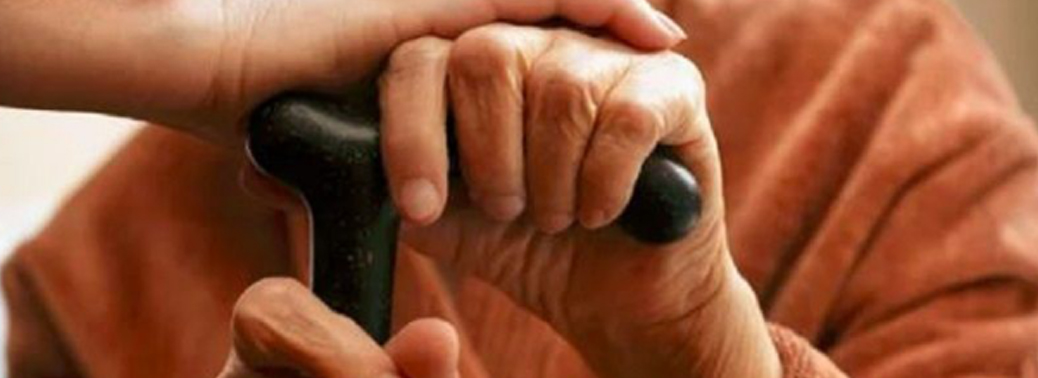
Why in News?
- The Maintenance and Welfare of Parents and Senior Citizens (Amendment) Bill, 2019 has been referred to the Standing Committee on Social Justice and Empowerment by the Lok Sabha Speaker. The bill was introduced in Lok Sabha in December, 2019.
Key Provisions of the Bill:
- It seeks to amend The Maintenance and Welfare of Parents and Senior Citizens Bill, 2007.
- Definition of ‘children’ and ‘parents’, ‘maintenance’ and ‘welfare’ has been expanded.
- Mode of submission of application for maintenance has been enlarged.
- Ceiling of Rs 10,000/- as maintenance amount has been removed.
- Preference to dispose of applications of senior citizens, above eighty years of age, early has been included.
- Registration of Senior Citizens Care Homes/Homecare Service Agencies etc. have been included.
- Minimum standards for senior citizen care homes have been included in the Bill.
- Appointment of Nodal Police Officers for Senior Citizens in every Police Station and District level Special Police Unit for Senior Citizens has been included.
- Maintenance of Helpline for senior citizens has been Included.”
Elders – A Key Resource:
- The elderly should be seen as a blessing, not a burden.
- The elderly are becoming the fastest growing, but underutilized resource available to humanity.
- Rather than putting them aside, physically (and mentally), to be cared for separately, they should be integrated into the lives of communities where they can make a substantial contribution to improving social conditions.
- The benefits of turning the ‘problem’ of the elderly into a ‘solution’ for other social problems are being demonstrated in several countries.
Need of an Hour:
- As a signatory to Madrid International Plan of Action on Ageing (MIPAA), India has the responsibility to formulate and implement public policy on population ageing.
- Issues of poverty, migration, urbanisation, ruralisation and feminisation compound the complexity of this emerging phenomenon.
- Public policy must respond to this bourgeoning need and mainstream action into developmental planning.
- Gender and social concerns of elderly, particularly elderly women, must be integrated at the policy level.
- The elderly, especially women, should be represented in decision making.
- Increasing social/widow pension and its universalisation is critical for expanding the extent and reach of benefits.
- Renewed efforts should be made for raising widespread awareness and access to social security schemes such as National Old Age Pensionand Widow Pension Scheme.
- Provisions in terms of special incentives for elderly women, disabled, widowed should also be considered.
UJALA AND SLNP
08, Jan 2020
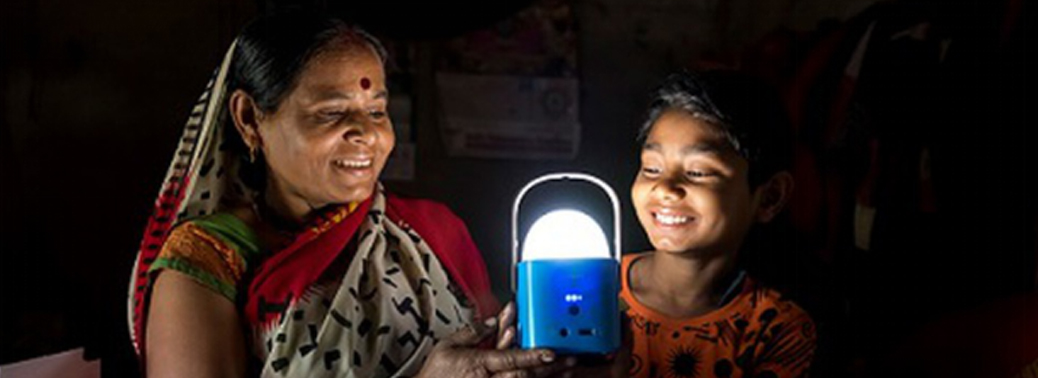
Why in News?
- The Government of India’s UJALA & Street Lighting National Programme (SLNP) complete five successful years.
UJALA:
- Unnat Jyoti by Affordable Lighting for All (UJALA) is a zero-subsidy scheme launched by the Government in 2015.
- It is touted as the world’s largest domestic lighting project.
Objectives:
- The UJALA scheme also known as the LED-based Domestic Efficient Lighting Programme (DELP) aims to promote the efficient usage of energy for all i.e., its consumption, savings and lighting.
- According to the UJALA scheme, LED bulbs would be distributed by the Electricity Distribution Company at subsidized rates to every grid-connected customer with a metered connection.
Implementation of UJALA scheme:
- Implementation of the UJALA scheme was done successfully in terms of investment and risk factors. The scheme was implemented as a joint contribution of EESL and DISCOM. Some of the outputs that were put forward by the UJALA scheme were:
- Replacing 200 million ordinary light bulbs by LED bulbs.
- Load reduction of 5000 MW.
- To reduce the emissions caused by greenhouse gases by 79 million tonnes of carbon dioxide.
SLNP:
- The SLNP is a government scheme to promote energy-efficiency in India.
- Energy Efficiency Services Limited (EESL), a joint venture of PSUs under the Power Ministry, is the implementing agency for SLNP.
- EESL, launched in 2015, has already replaced 50 lakh street lights with LED bulbs in more than 500 cities of India.
- To bring in mass-scale transformation, EESL has adopted a unique strategy by joining hands with states, municipal bodies and Urban Local Bodies (ULBs).
- Under the programme, EESL replaces the conventional street lights with LEDs at its own costs, with no upfront investment by the municipalities, thereby making their adoption even more attractive.
- Over a period, EESL is repaid through the consequent reduction in energy and maintenance cost of the municipality.
- This scheme is expected to enable peak demand reduction of 500 MW, annual energy savings of 190 crore kWh, and reduction in 15 lakh tons of CO2.
Objectives:
- Mitigate climate change by implementing energy-efficient LED-based street lighting.
- Reduce energy consumption in lighting which helps DISCOMs to manage peak demand.
- Provide a sustainable service model that obviates the need for upfront capital investment as well as additional revenue expenditure to pay for the procurement of LED lights.
- Enhance municipal services at no upfront capital cost of municipalities. The Government of India’s UJALA & Street Lighting National Programme (SLNP) complete five successful years.
NEED A DIFFERENT APPROACH TO ADDRESS CHILD MALNUTRITION
31, Dec 2019
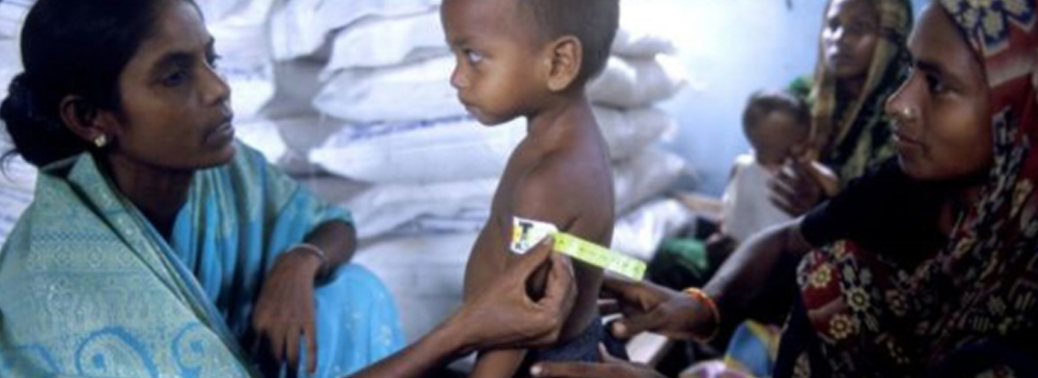
Why in News?
- Though National Family Health Survey-4 (NFHS-4) shows an encouraging improvement in child nutrition, the world level rankings on child nutrition draws a different picture about India.
Reports that pings on Child Nutrition:
- UNICEF’s report– one in three malnourished child in world belongs to India, half of the children under three years old are underweight and a third of wealthiest children are over-nutrient-ed.
- The 2018 Global Hunger Index (GHI)report ranked India 103rd out of 119 countries.
- According to the Indian Council of Medical Research (ICMR), in 2017, malnutrition was the predominant risk factor for death in children younger than five in every state of India.
- According to the Global Burden of Disease Study 2017,malnutrition is among the leading causes of death and disability in India.
Measures to address the lag in Improving Child Nutrition:
1.Timely Intervention:
- The focus must be on the pregnant, breastfeeding mother and the child, especially in the first two years of the child’s life, which is the crucial phase for physical, mental and cognitive development.
2.Targeted Approach:
- A targeted approach is needed because the size of the needy and the budgetary constraints already pose a big challenge.
- NFHS-4 provided district level data as well, hence the focus should be on the ones which require urgent attention.
- More public programmes which cover important nutrition-specific areas such as maternal nutrition should be started.
3.No “one size fits all approach”:
- As these districts are concentrated in Uttar Pradesh, Bihar, Madhya Pradesh and Jharkhand , Karnataka, Maharashtra, Rajasthan and Gujarat – their governments should make arrangements for the required funds and formulate policies to tackle high incidence of stunting in these districts.
- Further, even within these districts, the pockets where child malnutrition is high should be identified and the intervention or the target should go down till the clusters of Anganwadis where the problem is concentrated.
4.Policy Implementation based in Real Time Data:
- Policy initiatives should be guided by accurate real-time data at the sub-district level also.
5.Educating Girls and Spreading Awareness:
- Efforts should be made to spread messages on hygiene and sanitation, particularly the need to do away with open defecation practices.
- Similarly, education for girls should be advocated, as should the importance of enabling the financial independence of women through skilling and employment opportunities along with their inclusion in the formal financial network.
6.Sound public Service Delivery Institutions:
- Lastly, Programmes will have an impact only when there are sound public service delivery mechanisms, especially in the nutrition, health and education sectors.
- Hence, building a cadre of dedicated professionals in the government needs a high degree of political will and administrative commitment, centred around developing skills and knowledge and building motivation to stay the course.
30% OF POSHAN ABHIYAAN FUNDS USED
30, Dec 2019
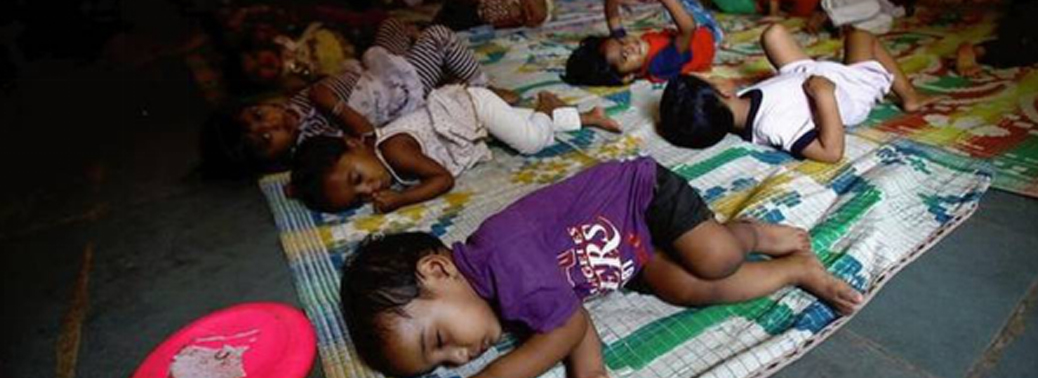
Why in News?
- The State governments and the Union Territories utilised a mere 30% of the funds released under the Poshan Abhiyaan, or the National Nutrition Mission, since it was launched in 2017.
About POSHAN Abhiyaan:
- POSHAN Abhiyaan (National Nutrition Mission) was launched by the government on March 8, 2018.
- It is implemented by the Ministry of Women and Child Development.
- The Abhiyaan targets to reduce stunting, under nutrition, anemia (among young children, women and adolescent girls) and reduce low birth weight by 2%, 2%, 3% and 2% per annum respectively.
- The target of the mission is to bring down stunting among children in the age group 0-6 years from 38.4% to 25% by 2022.
- POSHAN Abhiyaan aims to ensure service delivery and interventions by use of technology, behavioural change through convergence and lays-down specific targets to be achieved across different monitoring parameters.
- It is meant to benefit more than 10 crore people and was launched after a Cabinet decision on December 1, 2017, with a total budget of ₹9,046.17 crore for three years, 50% of which is through budgetary support, which is further divided into 60:40 between the Centre and the States, 90:10 for the north-eastern region and the Himalayan States and 100% for the Union Territories without legislature.
- The remaining 50% is from the World Bank or other multilateral development banks. As a result, the Centre’s total share will be ₹2,849.54 crore.
- Under the Abhiyaan, Swasth Bharat Preraks will be deployed one in each district for coordinating with district officials and enabling fast and efficient execution of the Abhiyaan across the country.
- Swasth Bharat Preraks would function as catalyst for fast tracking the implementation of the Abhiyaan.

Are the Funds Used?
- Barring Mizoram, Lakshadweep, Himachal Pradesh and Bihar, none of the governments used even half of the sum granted in the past three years, according to an analysis of the data shared in Parliament.
- According to the information given by Minister for Women and Child Development in the recent session of Parliament, a total of ₹4,283 crore was disbursed by the Centre to different States and Union Territories.
- Of this, ₹1,283.89 crore was utilised until October 31, 2019, or only 29.97% of thefunds granted. Figures were not available for 2017-2018 as the scheme was launched at the end of the fiscal.
Important Stats of the Report:
- The five best performers were Mizoram (65.12%), Lakshadweep (61.08%), Bihar (55.17%), Himachal Pradesh (53.29%) and Meghalaya (48.37%).
- The worst five performers were Punjab (0.45%), Karnataka (0.74%), Kerala (8.75%), Jharkhand (13.94%) and Assam (23.01%).
- During 2019-20, funds were released for 19 States, though 12 of them had used less than a third of the funds released in the previous two years.
- The CNNS, released by the Ministry of Health and Welfare in October, showed that 35% of children under the age of 5 are stunted and in this age group, 17% are wasted (low weight for height) and 33% underweight (low weight for age).
Way Forward:
- It is, thus, expected that utilisation will increase over years. A number of activities had a slow start but are now picking up. These include the Integrated Child Development Services-Common Application Software (ICDS-CAS) meant to monitor anganwadis.
- However, given the stiff targets, translating the activities into outcomes will be critical, and that remains to be seen.
PROTECTING MINORS/CHILDREN IN CONFLICT WITH LAW
30, Dec 2019

Why in News?
- In the backdrop of protests against the Citizenship (Amendment) Act, 2019, a number of minor under the age of 18 have been detained by the law enforcement authorities.
- This has invigorated the debate around child rights especially of those children who are in conflict with the law.
Legislative Framework in India regarding Child Rights (Children in conflict with law):
1.Juvenile Justice Act:
- Section 10 of the Juvenile Justice (Care and Protection of Children) Act, 2015 provides for a Special juvenile police unitor the designated child welfare police officer.
- A child is found to be in conflict with law he/she shall be placed under the charge of this officer who shall produce that child before the Juvenile Justice Board within a period of 24 hours.
- Thus the Juvenile Justice Act prohibits the detention of a child in police custody.
2.U.N Convention on Rights of Child
- The United Nations Convention on the Rights of the Child, 1989 (CRC), is a comprehensive document containing a set of universal legal standards or norms for the protection and well-being of children
- As per this document, they have a right to be protected from certain acts, such as torture, exploitation, abuse, arbitrary detention and unwarranted removal from parental care, and children.
- India ratified this convention in 1992 and enacted various laws in conformity of this convention for the protection of children.
- So, in accordance with that convention, the National Commission for Protection of Child Rights (NCPCR) a statutory body was set up under the Commission for Protection of Child Rights Act, 2005.
- It is entrusted with the responsibility to protect, promote and defend child rights in India.
- The commission works under the aegis of the Ministry of Women and Child Development.
NCPCR Guidelines:
- The National Commission for Protection of Child Rights guidelines on children’s rights in areas of civil unrest provide that law enforcement authorities should avoid blanket characterization of adolescent boys as security threats.
- Besides the guideline also direct the authorities to take the cases of arbitrary detention, mistreatment, or torture of children extremely seriously and investigate the violations and take appropriate action against personnel involved.
- In the context of the CAA protests, the NCPCR had highlighted that children were being used by certain groups of protesters were in unlawful activities such as stone-pelting which violates their rights under Juvenile Justice (Care and Protection of Children) Act, 2015
ATAL BHUJAL YOJANA
27, Dec 2019
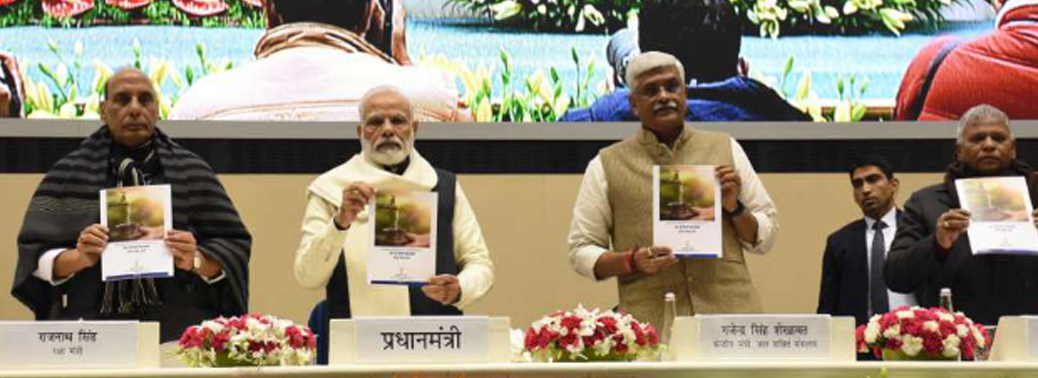
Why in News?
- Prime Minister Narendra Modi launched the Atal Bhujal Yojana to strengthen the institutional framework for participatory groundwater management and bringing about behavioural changes at the community level for sustainable Groundwater Resource Management in seven States.
Highlights:
- The scheme will be implemented in about 8,350 gram panchayats in 78 districts of Gujarat, Haryana, Karnataka, Madhya Pradesh, Maharashtra, Rajasthan and Uttar Pradesh.
- Of the total outlay of ₹6,000 crore to be provided from 2020-21 to 2024-25, 50% will be in the form of World Bank loan to be repaid by the Central government.
- The remaining part will be made available via Central assistance from regular budgetary support.
- The entire World Bank’s loan component and the Central assistance will be passed on to the States as grants.
- The Prime Minister said the scheme, or the guidelines related to the Jal Jeevan Mission, were big steps in proving the resolve to deliver water to every household in the country by 2024.
- He said the country had to prepare itself for dealing with every situation of water crisis, for which the government had been working at five levels.
- Modi said a comprehensive and holistic approach had been adopted with the setting up of the Jal Shakti Ministry, which this monsoon made extensive efforts for water conservation.
- The Jal Jeevan Mission would work towards delivering piped water supply to every house and Atal Bhujal scheme would pay special attention to those areas where the groundwater was very low.
- To incentivise gram panchayats, the Prime Minister said those with better performance would be given more allocation under the scheme.
- He said both the Central and State governments would spend ₹3.5 lakh crore on water-related schemes in the next five years.
Background:
- Over-exploitation of groundwater resources in India has been of great concern due to its impact on water availability and as well as on the environment.
- A recent report of NITI Aayog on groundwater level says 21 Indian cities including Delhi, Bengaluru, Chennai, and Hyderabad – will run out of groundwater by 2020.
- It also says that 40 percent of India’s population will have no access to drinking water by 2030.
- So in order to promote conservation of groundwater resources and their sustainable usage, the government has been working on various strategies.
NATIONAL POPULATION REGISTER (NPR)
23, Dec 2019

Why in News?
- The Kerala Government has recently decided to put on hold to all proceedings for updating the National Population Register (NPR).
About NPR:
- It is a Register of usual residents of the country.
- It is being prepared at the local (Village/sub-Town), sub-District, District, State and National level under provisions of the Citizenship Act 1955 and the Citizenship (Registration of Citizens and issue of National Identity Cards) Rules, 2003.
- It is mandatory for every usual resident of India to register in the NPR.
- A usual resident is defined for the purposes of NPR as a person who has resided in a local area for the past 6 months or more or a person who intends to reside in that area for the next 6 months or more.
- To create a comprehensive identity database of every usual resident in the country.
What does NPR consists of?
- The NPR database would contain demographic as well as biometric details.
- As per the provisions of the NPR, a resident identity card (RIC) will be issued to individuals over the age of 18.
- This will be a chip-embedded smart card containing the demographic and biometric attributes of each individual.
- The UID number will also be printed on the card.
What is the Controversy Around It?
- It comes in the backdrop of the NRC which excludes lakhs of people in Assam.
- It intends to collect a much larger amount of personal data on residents of India.
- There is yet no clarity on the mechanism for protection of this vast amount of data.
Significance of the Data:
- Every country must have a comprehensive identity database of its residents with relevant demographic details. It will help the government formulate its policies better and also aid national security.
- It will ease the life of those residing in India by cutting red tape. Not only will it help target government beneficiaries in a better way, but also further cut down paperwork and red tape in a similar manner that Aadhaar has done.
- With NPR data, residents will not have to furnish various proofs of age, address and other details in official work.
- It would also eliminate duplication in voter lists, Government Insists.
ONE NATION ONE RATION CARD SCHEME
20, Dec 2019
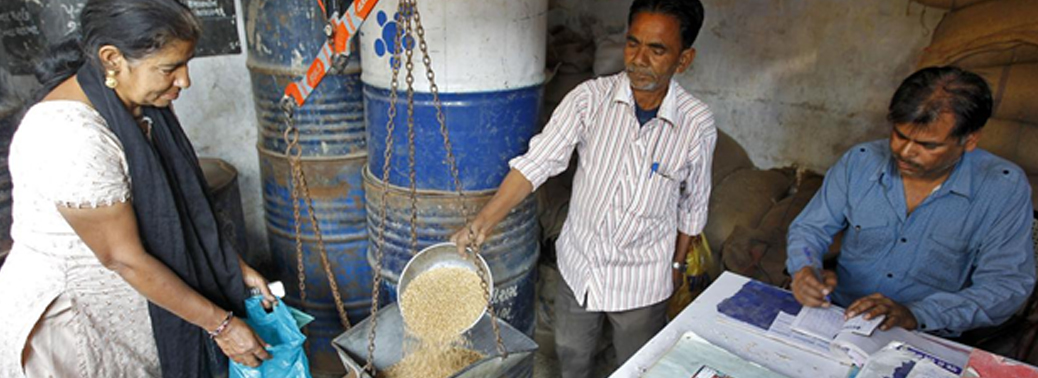
Why in News?
- The Centre has designed a standard format for ration cards as it moves ahead with ‘one nation, one ration card’ initiative and has asked State governments to follow the pattern while issuing fresh Ration Cards.
About the Ration Card and Ration Shop:
- A ration cardis issued to the head of the family, depending on the number of members in a family and the financial status of the applicant.
- It is used by households to get essential food grains at subsidised prices from designated ration shops (also called fair price shops) under the Targeted Public Distribution System (TPDS).
- Over the years, different types of ration cards were issued depending on the level of deprivation. Later, in 2013, when the National Food Security Billwas passed, different ration cards were compressed to just two — priority and Antyodaya (for the poorest).
- The responsibility of identifying eligible families and issuing ration cards to them rests with the state/UT government.
- Ration shopscan be privately owned or owned by cooperative societies or by the government. Ownership licenses are issued by the concerned state government.
- Presently, commodities including wheat, sugar, rice and kerosene are being allocated as part of the (TPDS). State governments have the discretion to provide additional commodities.
About the Scheme:
- Since Ration Cards are issued by State Governments, this implied that beneficiaries could procure food grains only from the designated ration shops within the concerned state.
- If a beneficiary were to shift to another state, he/she would need to apply for a new ration card in the second state. There were other complications.
- For instance, after marriage, a woman needed to get her name removed from the ration card issued to her parents, and get it added to the ration card issued to her husband’s family.
- The ONORC schemeattempts to address this gap in TPDS delivery. Essentially, the scheme has been launched keeping in mind the internal migration of our country, since people keep moving to different states in search of better job opportunities and higher standards of living.
- As per Census 2011, 4.1 crore people were inter-state migrants and 1.4 crore people migrated (inter and intra-state) for employment.
- With the ONORC scheme being implemented, the beneficiary can buy food grains from ration shops located in any of the states.
- Currently, the central government’s ambitious initiative is being implemented on a pilot basis in a cluster of six States. The government hopes to implement the scheme across India by June 1, 2020.
Benefits of the Proposed Scheme:
- According to Census 2011, there are more than 45 crore internal migrants in India, of whom more than half have not completed primary education, while 80% have not completed secondary education.
- Lower levels of education are linked to lower income, which would make a large percentage of these migrants eligible for NFSA benefits.
- Registering for ration cards at their new location is an arduous process, especially if some members of the household still remain in their original home.
- Apart from this, there are short-term migrants, often working in cities, but not moving there permanently.
- Women who change locations after marriage also find it difficult to start accessing ration benefits using a new household’s card.
- To curb corruption and improve access and service quality by Removing Monopolies.
Drawbacks of the Scheme:
- Since the scheme is based on technology, the government may face some technical challenges during the implementation of the scheme.
- Few Regional Parties have expressed apprehensions on bearing the cost of additional ration cards. This is a matter which is to be settled between the states and the Government of India.
- One of the apprehensions mentioned by few states is the cost of additional food grain to be supplied to the migrant workers.
- However, the whole system is based on the entitlements mandated under the NFSA and this prevents the charges of additional cost. Beneficiaries will continue to pay the same issue prices that are fixed under the NFSA.
DIVERSION OF LPG CYLINDERS FOR COMMERCIAL USE
13, Dec 2019

Why in News?
- The Comptroller and Auditor General (CAG), in its report on the Pradhan Mantri Ujjwala Yojana (PMUY), have highlighted the risk of diversion of domestic cylinders for commercial use.
About PMUY:
- It aims to provide LPG (liquefied petroleum gas)connections to poor households.
- Under the scheme, an adult woman member of a Below Poverty Line (BPL)family identified through the Socio-Economic Caste Census (SECC) is given a deposit-free LPG connection with financial assistance of Rs 1,600 per connection by the Centre.
- Eligible households will be identified in consultation with state governments and Union territories. The scheme is being implemented by the Ministry of Petroleum and Natural Gas. Under this scheme, initially 5 crore connections were to be provided to the people needing them. But now it has been extended to 8 crores.
- The scheme also provides interest-free loans to buy stove and refill by oil marketing companies.
- An initial outlay of Rs.8000 crore was sanctioned for the implementation of the scheme.The scheme is also expected to create employment to the tune of about a lakh.
- It will also boost the ‘Make in India’ programme for manufacturers of gas cylinders, stoves, gas hose and regulators. Only domestic manufacturers are engaged in this.
- It is also a business opportunity to the tune of a minimum of Rs.10000 crore.
What did the Report Say?
- The CAG said this level of consumption seemed improbable in view of the BPL status of such beneficiaries. Similarly, 96lakh beneficiaries consumed 3 to 41 refills in a month. Further, IOCL and Hindustan Petroleum Corporation Limited (HPCL) in 3.44 lakh instances issued 2 to 20 refills in a day to a PMUY beneficiary having single-bottle cylinder connection.
- As on 31March 2019, Oil Marketing Companies had issued 19 crore LPG connections, which is about 90% of the target to be achieved till March 2020.
- Audit noticed that out of 3.78 crore LPG connections, 60 crore (42%) connections were issued only on the basis of beneficiary Aadhaar which remained a deterrent in de- duplication.
- The CAG said that the laxity in identification of beneficiaries was noticed as 9,897 LPG connections were issued against Abridged Household List Temporary Identification Numbers (AHL TINs) where names of all family members and the beneficiary were blank in the Socio-Economic and Caste Census (SECC)-2011 list.
- Similarly, 4.10lakh connections were issued against AHL TINs where entire details of family except that of one member were blank in the 2011 list.
- Audit also observed that due to lack of input validation check in Indian Oil Corporation Limited (IOCL) software, 88lakh connections were released against AHL TIN of males.
- Data analysis also revealed that 8.59 lakh connections were released to beneficiaries who were minor as per the SECC-2011data, which was in violation of PMUY guidelines and LPG Control Order, 2000.
- It also exposed the mismatch in the name of 12.46 lakh beneficiaries between the PMUY database and SECC-2011 data.
Grievances to be Addressed:
- Lack of input validation check in the IOCL software allowed issue of 0.80 lakh connections to beneficiaries aged below 18 years.
- The audit also highlighted the delay of more than 365 days in the installation of 4.35 lakh connections against the stipulated time period of seven days.
- Adequate efforts were not made in distributing the small 5-kg cylinders for encouraging usage.
- Encouraging the sustained usage of LPG remains a big challenge as the annual average refill consumption of 93 crore PMUY consumers (who have completed more than one year as on March 31,2018) was only 3.66 refills as worked out by audit.
- For the 18crore PMUY beneficiaries, as on December 31, 2018, refill consumption declined to 3.21 refills per annum.
- The low consumption of refills by 92lakh loanee consumers (who had completed one year or more as on 31 December 2018) hindered recovery of the outstanding loan of ₹1,234.71 crore.
Immediate Requirements:
- The PMUY is a bold and much-needed initiative, but it should be recognised that this is just a first step.
- The real test of the PMUY and its successor programmes will be in how they translate the provision of connections to sustained use of LPG or other clean fuels such as electricity or biogas.
- Truly smokeless kitchens can be realized only if the government follows up with measures that go beyond connections to actual usage of LPG.
- This may require concerted efforts cutting across Ministries beyond petroleum and natural gas and including those of health, rural development and women and child welfare.

PROTECTION OF PLANT VARIETIES AND FARMERS’ RIGHTS AUTHORITY AMENDS IT’S FAQ DOCUMENT
11, Dec 2019
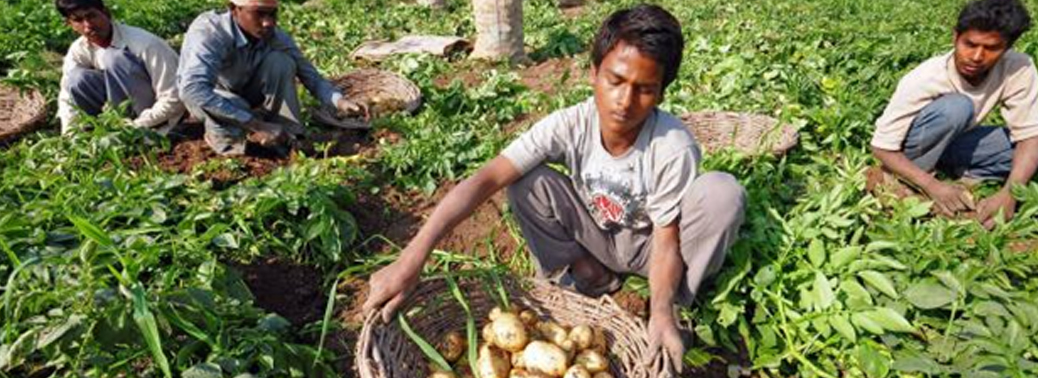
Why in News?
- The government has decided to set up an expert committee revise the FAQ document of the Protection of Plant Varieties and Farmers’ Rights Authority, which was quoted by the PepsiCo in the ongoing issue at the Authority.
Recent Issue:
- The ongoing case at the PPV&FRA revolves around PepsiCo’s FC5 variety of potatoes, which it grows through a collaborative farmer’s programme, wherein the company sells seeds to 12,000 farmers and has an exclusive contract to buy back their produce to make its chips.
- PepsiCo supplies the FC5 potato variety to a group of farmers who in turn sell their produce to the company at a fixed price.
- PepsiCo has exclusive rights on the variety by virtue of a Plant Variety Certificate granted under the Protection of Plant Varieties and Farmers’ Rights Act of 2001.
- PepsiCo had sued nine farmers for cultivating the FC5 potato variety without permission of PepsiCO.
- This variety of potatoes is grown exclusively for its popular Lay’s potato chips. PepsiCo has filed lawsuits for violating the company’s intellectual property rights on this variety of potato.
- The damages claimed are over one crore from some farmers.
- The farmers, on the other hand, have sought protection under Clause 39 of the same law which states that farmers are allowed “to save, use, sow, re-sow, exchange, share or sell… farm produce including seed of a variety protected under this Act” so long as they does not sell a “branded seed”.
Stand of PepsiCo:
PepsiCo has stated that:
- The Frequently Asked Questions or FAQ document of the Protection of Plant Varieties and Farmers Rights Authority (PPV&FRA), had claimed that “only small and marginal farmers involved in subsistence farming” are eligible to claim rights under the Protection of Plant Varieties and Farmers Rights (PPV&FR) Act, 2001.
- The FAQ also said these rights are not for “commercial farmers” and are only meant for “small scale” use.So PepsiCo has used the same argument in an ongoing case at the Authority over its registered potato variety used for Lays chips. The company has also cited the FAQ document to justify dragging more than nine farmers to court in 2018 for growing and selling its registered variety.
Decision of PPV&FRA:
- The government has decided to set up an expert committee revise the FAQ document.
- The document consisted of some statements that could have been explained in simpler language and some could be interpreted differently from what is provided.
- So, in order to solve ongoing impasse, government has decided to update the FAQ document.
About Protection of Plant Varieties and Farmers’ Rights (PPVFR) Act of 2001:
- It is an act of the parliament of India that was enacted to provide for the establishment of an effective system for protection of plant varieties, the rights of farmers and plant breeders and to encourage the development and cultivation of new varieties of plants.
- India have ratified the Agreement on Trade Related Aspects of the Intellectual property rights hasd to make provision for giving effect to agreement. So, in order to give effect to the aforesaid objectives, the Protection of Plant Varieties and Farmers Rights Act , 2001 has been enacted in India.
- The PPV&FR Act was enacted to grant intellectual property rights to plant Breeders, researchers and farmers who have developed any new plant varieties.
Farmers’ rights ensured in the Act:
- Farmers are entitled to save, use, sow, re-sow, exchange or sell their farm produce including seed of a registered variety in an unbranded manner.
- Farmers, varieties are eligible for registration and farmers are totally exempted from payment of any fee in any proceedings under this act.
- The period of protection for field crops is 15 years and for trees and vines is 18 years and for notified varieties it is 15 years from the date of notification under section 5 of Seeds Act, 1966.
- Farmers can claim for compensation if the registered variety fails to provide expected performance under given conditions.
KALIA SCHEME
09, Dec 2019

Why in News?
- Odisha government has decided to merge its KALIA Scheme with centre’s PM-KISAN Scheme recently.
About KALIA Scheme?
- KALIA or “Krushak Assistance for Livelihood and Income Augmentation” scheme was launched by the Odisha Government for farmer’s welfare.
- The aim of the scheme is to accelerate agricultural prosperity and reducing poverty in the State by encouraging cultivation and associated activities through financial assistance to farmers.
- The scheme is being seen as a viable alternative to farm loan waivers.
About Pradhan Mantri Kisan Samman Nidhi (PM-KISAN) Scheme:
- Under this programme, vulnerable landholding farmer families, having cultivable land upto 2 hectares, will be provided direct income support at the rate of Rs. 6,000 per year.
- This income support will be transferred directly into the bank accounts of beneficiary farmers, in three equal installments of Rs. 2,000 each.
About the Merger:
- Odisha government has decided to merge its KALIA Scheme with centre’s Pradhan Mantri Kisan Samman Nidhi (PM-KISAN) Scheme.
- So, in wake of this, Odisha government has also reduced the financial assistance given to farmers under the Kalia scheme to Rs 4,000 per annum from Rs 10,000.
- This is because of the reason to keep parity between both the schemes.
- The small farmers/marginal farmers may be given with Rs Rs.4,000 per year under KALIA scheme, so that they will get Rs 10,000 cumulatively per year. (i.e. Rs 6,000 from PM-KISAN and Rs 4,000 from KALIA).
- The Odisha government has also announced that the actual cultivators (share croppers) who are landless, if any, will also continue to get assistance from Kalia i.e; Rs 10,000 annually, since they are not considered under PM-KISAN.
Eligible Beneficiaries under KALIA Scheme (Before Merger):
- This scheme is for the benefit of Small and marginal farmers, landless Agricultural household, vulnerable Agricultural household, landless Agricultural labourers and sharecroppers (Actual cultivators)
- Small and Marginal Farmers are eligible to get benefit financial assistance of Rs.25000 per family over 5 seasons under support to cultivators for cultivation.
- Marginal Farmer – who owns less than 1 hectare of Agricultural land
- Small Farmer – who owns 1 hectare (2.5 acres) to 2 hectares (5 acres) of Agricultural land.
- Land less agricultural households is eligible to get financial Assistance of Rs.12500 for the livelihood support under the scheme.
- Vulnerable agricultural household covering vulnerable cultivators/ landless agricultural labourers are eligible to get financial assistance of Rs, 10,000 per year under the KALIA scheme. Vulnerable cultivators/ landless agricultural labourers include old age, disability, disease or any other reason. Out of the above three components viz., support to cultivators for cultivation, livelihood support for landless agricultural household and financial assistance to vulnerable agricultural household, one beneficiary will avail only one benefit as per the eligibility. Apart from these components, the scheme also provides for life insurance support and interest free crop loans for all the categories of beneficiary under KALIA scheme.
Similar Farmer Assistance Schemes Elsewhere:
Rythu Bandhu Scheme of Telangana:
- Rythu Bandhu scheme also known as Farmers’ Investment Support Scheme (FISS) is a farmer welfare program of the Government of Telangana. This scheme has been introduced in order to support farmers’ investment in the agriculture so as to boost the agricultural prosperity.
- Under this scheme, the government is providing Rs 4,000 per acre per season, twice a year for growing Kharif and Rabi crops.
- The financial assistance is provided to all the farmers and there is no cap on the number of acres owned by the farmers.
- It is to be noted that more than 75% of the agricultural land in Telangana is under the control of small and marginal farmers and hence this scheme is considered to be of immense benefit to the small and marginal farmers.
A Comparison in Brief:
| KALIA Scheme | Rythu Bandhu Scheme | PM-KISAN SCHEME | |
|---|---|---|---|
| State | Odisha | Telangana | Centre |
| Coverage | Small and marginal farmers Landless Agricultural household, Vulnerable Agricultural household Landless Agricultural labourers Sharecroppers (Actual cultivators) | All the Farmers | All the land holding Farmers |
| Tenants and Sharecroppers included | Yes | No | No |
| Financial Assistance Provided | Differs for different categories of beneficiaries | Uniform financial assistance of Rs 8,000 per year | Rs.6000 per year |
| Life Insurance Support | Yes | No | Not provided |
| Interest Free Crop Loans | Yes | No | Not provided |
A POTENTIAL SEEDBED FOR PRIVATE PROFITS
07, Dec 2019

Context:
- Seeds Bill 2019 which was introduced in the parliament was taken up for consideration recently. The earlier versions of the Bill, in 2004 and 2010, had generated heated debates. The present version has also been with certain problematic provisions and the article discusses it in brief.
Background Information:
1. India Signing TRIPS and UPOV
- In 1994, India signed the agreement on Trade-Related Aspects of Intellectual Property Rights (TRIPS). In 2002, India also joined the International Union for the Protection of New Varieties of Plants (UPOV) Convention.
- The above two agreements has made a nation has to give priority to Seed breeder’s rights over farmer’s rights.
- Both TRIPS and UPOV led to the introduction of some form of Intellectual Property Rights (IPR) over plant varieties.
- Member countries had to introduce restrictions on the free use and exchange of seeds by farmers unless the “breeders” were remunerated.
2. India signing CBD and ITPGRFA:
- In 1992,India signed the Convention on Biological Diversity (CBD) which provided for “prior informed consent” of farmers before the use of genetic resources and “fair and equitable sharing of benefits” arising out of their use.
- In 2001, India signed the International Treaty on Plant Genetic Resources for Food and Agriculture (ITPGRFA) which recognised farmers‟ rights as the rights to save, use, exchange and sell farm-saved seeds.
- It is clear that these two agreements has made a country to favour farmer’s rights over breeder’s rights. So, national governments had the responsibility of protecting farmer’s rights.
- Here we can notice TRIPS and UPOV runs counter to the above two international conventions.
3. A Delicate Balance of all:
- As India was a signatory to TRIPS and UPOV (that gave priority to breeders‟ rights) as well as CBD and ITPGRFA (that emphasised farmers‟ rights), any Indian legislation had to be in line with all.
- Protection of Plant Varieties and Farmers‟ Rights (PPVFR) Act of 2001 was enacted with this delicate balance.
- The PPVFR Act retained the main spirit of TRIPS viz., IPRs as an incentive for technological innovation. However, the Act also had strong provisions to protect farmers‟The PPVFR Act also recognised three roles for the farmer: cultivator, breeder and conserver. As cultivators, farmers were entitled to plant-back rights. As breeders, farmers were held equivalent to plant breeders. As conservers, farmers were entitled to rewards from a National Gene Fund.
Introduction of New legislation – Seed Bill, 2019
- According to the government, a new Seeds Bill is necessary to enhance seed replacement rates in Indian agriculture, specify standards for registration of seed varieties and enforce registration from seed producers to seed retailers.
- While these goals are indeed worthy, any such legislation is expected to be in alignment with the spirit of the PPVFR Act. Not surprisingly, many of the Bill’s provisions deviate from the spirit of the PPVFR Act, are against farmers’ interests and in favour of private seed companies. For instance, a shift from farm-saved seeds to certified seeds, which would raise seed replacement rates, is desirable. Certified seeds have higher and more stable yields than farm-saved seeds. However, such a shift should be achieved not through policing, but through an Enabling Atmosphere.
Interest of Private Companies:
- From the late-1980s, Indian policy has consciously encouraged the growth of private seed companies, including companies with majority foreign equity.
- Today, more than 50% of India’s seed production is undertaken in the private sector.
- These firms have been demanding favourable changes in seed laws and deregulation of seed prices, free import and export of germplasm, freedom to self-certify seeds and restrictions on the use by farmers of saved seeds from previous seasons.
- Through the various versions between 2004 and 2019 of the same bill, private sector interests have guided the formulation of the Seeds Bill.
- As a result, even desirable objectives, such as raising the seed replacement rates, have been mixed up with an urge to encourage and protect the business interests of private companies.
Problematic Provisions of the New Bill:
- The provisions of the new bill that runs counter to the existing PPVFR Act are as follows:
1. Compulsory Registration of Seeds
- The Seeds Bill insists on compulsory registration of seeds. However,The PPVFR Act was based on voluntary registration of seeds.
- As a result, many seeds may be registered under the Seeds Bill but may not under the PPVFR Act.
- Assume a seed variety developed by a breeder, but derived from a traditional variety. The breeder will get exclusive marketing rights. But no gain will accrue to farmers as benefit-sharing is dealt with in the PPVFR Act, under which the seed is not registered.
2. Compensation for Farmer’s Role in Development of a Seed Variety:
- As per the PPVFR Act, all applications for registrations should contain the complete passport data of the parental lines from which the seed variety was derived, including contributions made by farmers.
- This allows for an easier identification of beneficiaries and simpler benefit-sharing processes.
- Seeds Bill, on the other hand, demands no such information while registering a new variety. As a result, an important method of recording the contributions of farmers is overlooked and private companies are left free to claim a derived variety as their own.
3. Ever-Greening of registration
- The PPVFR Act, which is based on an IPR like breeders‟ rights, does not allow re-registration of seeds after the validity period.
- However under the new bill private seed companies can re-register their seeds an infinite number of times after the validity period. Given this “ever-greening” provision, many seed varieties may never enter the open domain for free use.
4. Seed Pricing
- The new bill has vague provisions for regulation of seed prices which appears neither sufficient nor credible.
- This has been the scenario ,when strict control on seed prices has been an important demand raised by farmers’ organisations.
- In its absence, they feel, seed companies may be able to fix seed prices as they deem fit, leading to sharp rises in costs of cultivation.
5.Compensation to Farmers:
- According to the PPVFR Act, if a registered variety fails in its promise of performance, farmers can claim compensation before a PPVFR Authority.
- This provision is diluted in the Seeds Bill, where disputes on compensation have to be decided as per the Consumer Protection Act 1986. Consumer courts are hardly ideal and friendly institutions that Farmers can Approach.
Way Ahead:
- Private seed companies prefer policing because their low-volume, high-value business model is crucially dependent on forcing farmers to buy their seeds every season.
- So, on the other hand, an enabling atmosphere has to be generated by the strong presence of public institutions in seed research and production.
- When public institutions, not motivated by profits, are ready to supply quality seeds at affordable prices, policing becomes redundant.
- For the seed sector and its laws to be truly farmer-friendly, the public sector has to recapture its lost space.
About Protection of Plant Varieties and Farmers’ Rights Authority, India:
- It has been established under the provisions of Protection of Plant Varieties and Farmers’ Rights Act, 2001.
- Its Objectives Includes:
- An effective system for protection of plant varieties,
- The rights of farmers and plant breeders and
- To encourage the development of new varieties of plants it has been considered necessary to recognize and protect the rights of the farmers in respect of their contribution made at any time in conserving, improving and making available plant genetic resources for the development of the new plant varieties.
- To accelerate agricultural development, it is necessary to protect plants breeders’ rights to stimulate investment for research and development for the development of new plant varieties.
- Such protection is likely to facilitate the growth of the seed industry which will ensure the availability of high quality seeds and planting material to the Farmers.
FUGITIVE ECONOMIC OFFENDERS
06, Dec 2019

Why in News?
- A special court on Thursday declared absconding Nirav Modi, prime accused in the Punjab National Bank scam, a fugitive economic offender (FEO).
- The declaration allows the government to initiate action to confiscate the offender’s properties.
- Nirav Modi is the second person to be declared a fugitive economic offender, under the new fugitive Economic Offenders Act, after Vijay Mallya.
“Fugitive Economic Offender”
- A person can be named an offender under this law if there is an arrest warrant against him or her for committing any offence listed in the schedule of the act and for involvement in economic offences involving at least Rs. 100 crore or more and has fled from India to escape Legal Action.
- Major criteria that have to be satisfied are:
- The Person has left the country to avoid facing prosecution.
- He refuses to return to India to face prosecution.
About Fugitive Economic Offenders Act, 2018:
- The Fugitive Economic Offenders Act, 2018 seeks to confiscate properties of economic offenders who have left the country to avoid facing criminal prosecution.
- Offences involving amounts of Rs. 100 crore or more fall under the purview of this law.
- Some of the offences listed in the schedule of the bill are-counterfeiting government stamps or currency, cheque dishonour for insufficiency of funds, money laundering, transactions defrauding creditors etc.
Proceedings as per the Act:
- To declare a person an FEO, an application will be filed in a Special Court (designated under the Prevention of Money-Laundering Act, 2002) containing details of the properties to be confiscated, and any information about the person’s whereabouts.
- The Special Court will require the person to appear at a specified place at least six weeks from issue of notice. Proceedings will be terminated if the person appears.
- Attachment of the property of a fugitive economic offender.
- Confiscation of the property of an individual declared as a fugitive economic offender resulting from the proceeds of crime.Confiscation of other property belonging to such offender in India and abroad including benami property.
- Disentitlement of the fugitive economic offender from defending any civil claim.
- All cases under the proposed law will be tried under the Prevention of Money Laundering (PMLA) Act and the administrator will sell the fugitive’s properties to pay off the lenders.
- The proposed law will have an overriding effect over all other pieces of legislation.
United Nations Convention against Corruption:
- Non conviction based asset confiscation for corruption related cases are enabled under provisions of United Nations Convention against Corruption which India ratified in 2011. This Act is adopted based on this principle.
- The United Nations Convention against Corruption is the only legally binding universal anti-corruption instrument.
- It was adopted by the General Assembly in 2003 and entered into force on December 14, 2005.
- The Convention covers five main areas: preventive measures, criminalization and law enforcement, international cooperation, asset recovery, and technical assistance and information exchange.
THE TRANSGENDER PERSONS (PROTECTION OF RIGHTS) BILL, 2019
04, Dec 2019
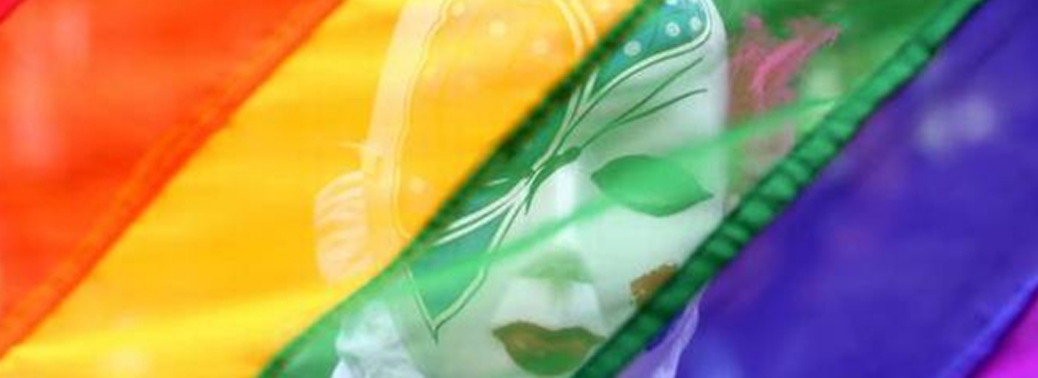
Why in News?
- Rajya Sabha has recently passed “The Transgender Persons (Protection of Rights) Bill, 2019” without any Amendments.
About Transgenders:
- Transgender community includes Hijras, Eunuchs, Kothis, Aravanis, Jogappas, ShivShakthis etc., who have been a part of Indian society for centuries. The Vedic and Puranic literatures mention “tritiyaprakriti” meaning the third gender.
- Though most of the eunuchs seen today are begging at traffic signals or during weddings, they were a respected lot during the Mughal rule in the Medieval India.
- During the British rule, they were denied civil rights and were considered a separate caste or tribe who did kidnapping and castration of children and danced and dressed?like women.
- In Post-Independence Era, the Act was repealed but its legacy continues and many local laws reflected the prejudicial attitudes against certain tribes, including Hijras.
- In contemporary times, the LGBTQ group is referred to as the “lesbian, gay, bisexual, transgender, and queer community” which includes those with gender dysphoria and different sexual orientations.
Sex (vs) Gender:
- It also needs to be understood that “Sex” and “Gender” are different things. One may be born as Male (sex) but may identify himself like a Woman (Gender). So “Sex” is biological and “Gender” is the real sexual identity of a person.
Transgenders in India:
- According to the 2011 Census, the number of persons who do not identify as ‘male’ or ‘female’ but as ‘other’ stands at 4,87,803 (i.e. 0.04% of the total population)
- Indian census has never recognized the third gender, i.e., transgender while collecting census data for years.
- The 2011 census also reported 55,000 children as transgender identified by their parents.
About Transgender Persons (Protection of Rights) Bill, 2019:
Key Provisions of the Bill:
1. Definition of a Transgender Person:The Bill defines a transgender person as one whose gender does not match the gender assigned at birth. It includes trans-men and trans-women, persons with intersex variations, gender-queers, and persons with socio-cultural identities, such as kinnar and hijra.Intersex variations are defined to mean a person who at birth shows variation in his or her primary sexual characteristics, external genitalia, chromosomes, or hormones from the normative standard of male or female body.
2.Certificate of identity for a Transgender Person:A transgender person may make an application to the District Magistrate for a certificate of identity, indicating the gender as ‘transgender’. A revised certificate may be obtained only if the individual undergoes surgery to change their gender either as a male or a female.
3.Prohibition against Discrimination:The Bill prohibits the discrimination against a transgender person, including denial of service or unfair treatment in relation to:(i) education; (ii) employment; (iii) healthcare; (iv) access to, or enjoyment of goods, facilities, opportunities available to the public; (v) right to movement; (vi) right to reside, rent, or otherwise occupy property; (vii) opportunity to hold public or private office; and (viii) access to a government or private establishment in whose care or custody a transgender person is.
4.National Council for Transgender persons (NCT):The NCT will consist of:
(i) Union Minister for Social Justice (Chairperson); (ii) Minister of State for Social Justice (Vice- Chairperson); (iii) Secretary of the Ministry of Social Justice; (iv)one representative from ministries including Health, Home Affairs, and Human Resources Development. Other members include representatives of the NITI Aayog, and the National Human Rights Commission. State governments will also be represented. The Council will also consist of five members from the transgender community and five experts from non-governmental organisations.
5.Right of Residence: Every transgender person shall have a right to reside and be included in his household.
6.Employment:No government or private entity can discriminate against a transgender person in employment matters, including Recruitment, and Promotion.
7.Education: Educational institutions funded or recognised by the Relevant Government shall provide inclusive education, sports and recreational facilities for Transgender Persons, without Discrimination.
8.Health Care:The government must take steps to provide health facilities to transgender persons including separate HIV surveillance centres, and sex reassignment surgeries. The government shall review medical curriculum to address health issues of transgender persons, and provide comprehensive medical insurance schemes for them.
9.Welfare Measures by the Government:The Bill states that the relevant government will take measures to ensure the full inclusion and participation of transgender persons in society.
10.Offences and Penalties: The Bill recognizes the following offences against transgender persons: (i) forced or bonded labour (excluding compulsory government service for public purposes), (ii) denial of use of public places, (iii) removal from household, and village, (iv) physical, sexual, verbal, emotional or economic abuse. Penalties for these offences vary between six months and two years, and a fine.
Arunkumar (vs) The Inspector General of Registration case:
- In April 2019, the Madurai Bench of the Madras High Court delivered a historic judgment in Arunkumar v. The Inspector General of Registration. This judgment marks the beginning of a normative journey of intersex human rights in India. The court took up the issue of validity of consent given on behalf of intersex infants for undergoing sex selective surgeries.
- It held that the consent of the parent cannot be considered as the consent of the child. Hence, such surgeries should be prohibited.
- This is a momentous judgment as it recognises the consent rights of intersex children and the right to bodily integrity.
Major Concerns in the Bill:
- Definition:The definition of ‘transgender persons’ in the Bill is at variance with the definitions recognised by international bodies and experts in India. The terms, ‘trans-men’, ‘trans-women’, persons with ‘intersex variations’ and ‘gender-queers’ have not been defined.
- Self-Identity:Even though the bill says that a transgender person “shall have a right to self-perceived gender identity,” its language could be interpreted to mean transgender people are required to have certain surgeries before legally changing their gender.
- Privacy: A District Screening Committee would issue a certificate of identity to recognise transgender persons. This is also a violation of Fundamental Right to Privacy.
- Existing Framework: Certain criminal and personal laws that are currently in force only recognise the genders of ‘man’ and ‘woman’. It is unclear how such laws would apply to transgender persons who may not identify with either of the Two Genders.
Other Issues to be considered:
- If a transgender person is denied a Certificate of Identity, the Bill does not provide a mechanism for appeal or review of such decision of the District Screening Committee.
- The bill is also silent on whether a trans-person who holds a male or female gender certificate will have access to government welfare schemes and programs meant for transgender people.
- The Bill is silent on granting reservations to transgender persons.
- The Bill does not mention any punishments for rape or sexual assault of transgender persons as according to Sections 375 and 376 of the Indian Penal Code, rape is only when a man forcefully enters a woman.
Key Recommendations towards the Bill:
- 1.The title of the Bill itself is exclusionary as it does not accommodate all persons whose legal protection it seeks to recognise. Therefore, the definition should highlight this distinction between transgender persons and intersex persons enabling them to exercise the rights which they are entitled to.Parliament will be well-advised to consider changing the title of the Bill to Gender Identity, Gender Expression and Sex Characteristics (Protection of Rights) Bill, 2019.
- 2.The Bill doesn’t say much about discrimination against intersex persons. Intersex conditions are termed in derogatory terms even by medical professionals. To address this, the Bill should have included a provision directing medical professionals to ensure that intersex traits are not characterised as “disorders of sex development”.Intersex traits should not be considered as genetic defects/ disorders, and terms like ‘gender dysphoria’ should be used to characterise them.
- 3.The bill should be revised to emphasize training teachers to help them adopt inclusive teaching methods to ensure that children are not harassed or discriminated against by staff or other children.
OPERATION BLACKBOARD COMES HOME IN TELANGANA
27, Nov 2019

Why in News?
- Over 41,000 women in Telangana’s Sangareddy district can now fell the power of the written word after learning the alphabet for the first time.
About:
- These women were home-schooled by their own children and have cleared the examination conducted by the National Institute of Open Schooling (NIOS).
- The NIOS exam is normally taken by 4,000 to 5,000 neo-literates from each district annually, but that number exceeded the norm ten times due to the Sangareddy programme for female literacy initiated by the then District Collector in 2017.
- The Saakshar Bharat Mission (SBM) imparts functional literacy and numeracy, but faced a shortage of coordinators. So, the Collector decided to rope in school children.
- In 2017, the district administration developed ‘Ammaku Akshara Mala’ (alphabet garland for mother) and roped in students in Classes VII to X.
- They were asked to teach their mothers to read and write the Telugu alphabet at home.
- Most women were part of Self-Help Groups but not literate. The administration identified 52,000 women as eligible to take the exam and sent the list to the Central government.
- Of 48,000 women who took the exam in March 2018, 41,000 passed in writing, reading and numerical skills. In a 15-day literacy module, the women were taught four letters of the Telugu alphabet in a day.
What is Operation Blackboard?
- Operation Blackboard is a centrally sponsored programme which was started in 1987 immediately after the Rajiv Gandhi National Policy on Education (NPE) of 1986 was released to supply the bare minimum crucial facilities to all primary schools in the country.
What is Operation Whiteboard?
- Simdega district of Jharkhand recently launched ‘Operation Whiteboard’ on the lines of ‘Operation Blackboard’ which was launched by the Government of India in 1981.
- The primary goal of the operation is to equip all the classrooms of the government schools of the district with whiteboards, hence ensuring ‘Freedom from Chalk Dust’ to the students as well as teachers.
Operation Digital Blackboard (ODB):
- ODB aims to have digital and interactive boards in every classroom, which is on the lines of Operation Blackboard which was started in 1987 to supply the bare minimum crucial facilities to all primary schools in the country.
- Introduction of the digital board all over the country in government and government aided schools from class 9th onwards as well as in higher education institutions, from the coming session of 2019 itself.
- University Grants Commission (UGC) will be the implementing agency for ODB in Higher Education Institutions (HEIs). It will be implemented as a Central scheme, as a loan from Higher Education Financing Agency (HEFA).
- At school level, Digital / SMART board will be provided in all Government and Government – aided schools by the Central Government in collaboration with the State and UTs.
- It aims at converting a classroom into a digital classroom.
- Ensure availability of e-resources at any time and at any place to students.
- It helps in provisioning of personalized adaptive learning as well as Intelligent Tutoring by exploiting emerging technologies like Machine Learning, Artificial Intelligence & Data Analytics.
MATERNITY SCHEME REACHES ONLY ONE-THIRD OF BENEFICIARIES
19, Nov 2019

Why in News?
- Researchers assert that extrapolation of RTI data show only 31% of eligible mothers got benefits.
About Maternity Benefit Scheme:
- Pradhan Mantri Matru Vandana Yojana (PMMVY) is a maternity benefit programme being implemented in all districts of the country with effect from 1st January, 2017.
- It is a centrally sponsored scheme being executed by the Ministry of Women and Child Development.
- Cash benefits are provided to pregnant women in their bank account directly to meet enhanced nutritional needs and partially compensate for wage loss.
- Beneficiaries receive a cash benefit of Rs. 5,000 in three instalments on fulfilling the following conditions:
1.Early registration of pregnancy
2.Ante-natal check-up
3.Registration of the birth of the child and completion of first cycle of vaccination for the First Living Child of the Family.
- The eligible beneficiaries also receive cash incentive under Janani Suraksha Yojana (JSY). Thus, on an average, a woman gets Rs. 6,000. Implementation of the scheme is closely monitored by the central and state governments through the Pradhan Mantri Matru Vandana Yojana – Common Application Software (PMMVY-CAS). PMMVY-CAS is a web based software application that enables tracking the status of each beneficiary under the scheme, resulting in expedited, accountable and better grievance redressal.
Who are the Beneficiaries?
- All Pregnant Women and Lactating Mothers (PW&LM), excluding those who are in regular employment with the Central Government or the State Governments or PSUs or those who are in receipt of similar benefits under any law for the time being in force.
- All eligible Pregnant Women and Lactating Mothers who have their pregnancy on or after 1st January 2017 for the first child in the family.
What does the RTI Extrapolation say?
- A vital programme to support lactating mothers and pregnant women by compensating them for loss of wages during their pregnancy has been able to reach only less than a third of the eligible beneficiaries.
- Almost 61% of beneficiaries registered under the Pradhan Mantri Matru Vandana Yojana (PMMVY) between April 2018 and July 2019 (38.3 lakh out of the total 62.8 lakh enrolled) received the full amount of ₹6,000 promised under the scheme.
- The scheme brings under its ambit 23% of all births and pays full benefits to a mere 14% of all births, which was at 270.5 lakh for 2017.
- The data extrapolated from the RTI reply is also consistent with a survey coordinated by three development economists.
- The survey team covered a district each in six States — Chhattisgarh, Himachal Pradesh, Jharkhand, Madhya Pradesh, Uttar Pradesh and Odisha — in 2019 to interview women and inspect anganwadis. A total of 706 women were interviewed, including 342 pregnant and 364 lactating women.

Inadequate Awareness:
- The study found that only 50% of pregnant women and 57% of nursing women surveyed were eligible for the scheme.
- It also throws light on the need for higher awareness among the pool of beneficiaries — only 66% of pregnant women and 69% of nursing women knew about the scheme.
- Only 8% of pregnant women and 23% of nursing mothers received some benefits.
- Several factors impeded proper implementation of the programme that aims to fight malnutrition among children.
- These include an application form of about 23 pages, a slew of documents such as mother-child protection card, Aadhaar card, husband’s Aadhaar card and bank passbook aside from linking their bank accounts with Aadhaar.
- The requirement to produce the husband’s Aadhaar card results in excluding women who may be living with men they are not married to, single mothers and those who may be staying at their natal home.
- Women must also have the address of their marital home on their Aadhaar card, which often results in newlyweds being either left out or forced to go from door-to-door when pregnant and needing rest and care.
- The survey findings also highlight the need to pay greater attention to the special needs of pregnancy — good food, extra rest and health care.
- Only 22% of the nursing women surveyed reported that they had been eating more than usual during their pregnancy and the average weight gain was barely 7kg when it should be at least 13-18kg.
- Almost all the respondents had done household work regularly during their last pregnancy — 21% of nursing women said that they had no one to help them with domestic chores and 63% said that they had been working right until the day of delivery.
NIRVIK SCHEME
18, Sep 2019
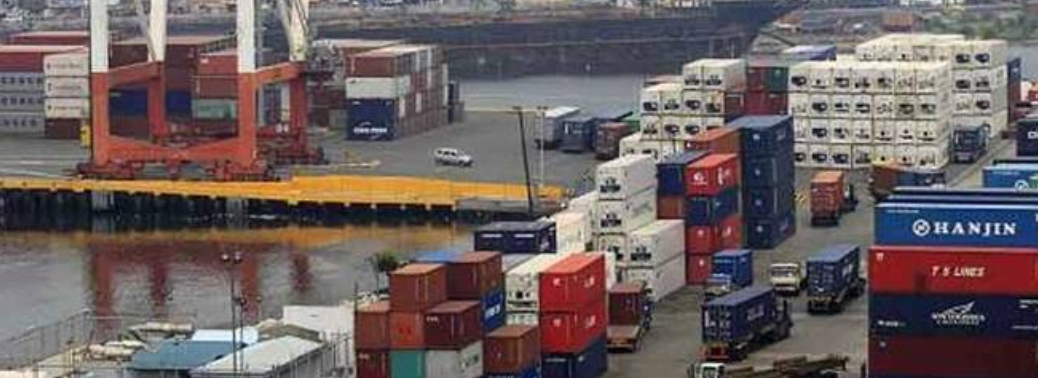
Why in News?
- To enhance the loan availability of exporters, and the MSME sector the Export Guarantee Corporation of India (ECGC) has launched a new scheme called ‘Nirvik’.
- To revive the export sector, Commerce Ministry also launched the common digital platform for the issuance of certificates of origin
Nirvik Scheme:
- If there is any loss, then ECGC provided credit guarantee of up to 60% loss approximately.
- Now under new scheme Nirvik consumers and exporters will covered up to 90% and if there is any loss then in that case ECGC will refund 90% to the banks including principal and interest.
- Both pre and post shipment credit will also be covered under the new scheme.
- Banks will get up to 50 % within 30 days of complain lodge.
- Enhanced cover will ensure that Foreign and Rupee export credit interest rates will be below 4% and 8% respectively for exporters.
- The scheme envisages simplified procedure for settlement of claim and for provisional payment up to 50% within 30 days on production of proof of end-use of the advances in default by the Insured Bank.
Electronic Certificates of Origin (CoO):
- This platform will be a single access point for all exporters, for all Free Trade Agreements (FTAs)/ Preferential Trade Agreements (PTAs) and for all agencies concerned.
- As we know, for exports to countries with which India has free trade agreements (FTA), exporters have to show a certificate that the consignment originated in India.
- With the launch of this platform, these certificates can be obtained online and all the issuing authorities will be on the same portal.
- Certificate of Origin will be issued electronically which can be in paperless format if agreed to by the partner countries.Authorities of partner countries will be able to verify the authenticity of certificates from the website.
INSTITUTIONS OF EMINENCE (IOE) SCHEME
06, Sep 2019

Why in News?
- The Human Resource Development Ministry has awarded the status of Institute of Eminence to the IIT-Madras, the IIT-Kharagpur, Delhi University, Benares Hindu University and the University of Hyderabad.
Scheme & Objective:
- Institutions of Eminence scheme has been launched in order to implement the commitment of the Government to empower the Higher Educational Institutions and to help them become world-class teaching and research institutions.
- To provide for higher education leading to excellence and innovations in such branches of knowledge as may be deemed fit at post-graduate, graduate and research degree levels and award degrees, diplomas and other academic distinction
- To engage in areas of specialization to make distinctive contributions to the objectives of the university education system wherein the academic engagement is clearly distinguishable from programmes of an ordinary nature.
- To develop the capacity of the students and the researchers to compete in the global tertiary education marketplace through the acquisition and creation of advanced knowledge in those areas
- To provide for high-quality teaching and research and for the advancement of knowledge and its dissemination through various research programmes undertaken in-house by substantial number of full-time faculty and research scholars in diverse disciplines
- To pay special attention to teaching and research in unique and emerging areas of knowledge, including interdisciplinary areas, which are regarded as important for strategic needs of the country but are not being pursued by conventional or existing institutions so far, and award degrees, diplomas and other academic distinctions.
- To aim to be rated internationally for its teaching and research as a top hundred Institution in the world over time.
‘EAT RIGHT INDIA’ CAMPAIGN
06, Sep 2019

Why in News?
- Government of India launches ‘Eat Right India’ to tackle lifestyle diseases.
Need for Such Campaign:
- India is passing through an epidemiological shift from communicable to non-communicable diseases, and the burden of diet-related diseases such as diabetes, hypertension, and obesity is rising rapidly.
- The new “food systems approach” judiciously combines the regulatory and capacity building measures with consumer empowerment initiatives
About Eat Right India:
- Eat Right India’, built on two broad pillars of ‘Eat Healthy’ and ‘Eat Safe’, aims to engage, excite and enable citizens to improve their health and well-being.
- Led by FSSAI, it is a collective effort to make both the demand and supply-side interventions through the engagement of key stakeholders.
- It is a part of the vision of the Hon. Prime Minister Shri Narendra Modiji, that the month of September is being celebrated all across the country as “Poshan Maah” (Nutrition Month) to sensitize the public towards healthy eating, address the twin issues of malnutrition/undernutrition and problem of obesity in some sections of the population, and also intensifying the campaign towards a ‘Malnutrition Free India.
- This movement is aligned with the Government’s flagship public health programmes such as POSHAN Abhiyaan, Ayushman Bharat Yojana and Swachh Bharat Mission to lead us to the New India, which our Prime Minister wishes to deliver to all citizens by 2022.
Aim:
- To improve public health in India and combat negative nutritional trends to fight lifestyle diseases.
Features:
- The strength of the ‘The Eat Right Movement’ lies in its holistic and collaborative approach, with stakeholders on both the demand and supply-side joining to make a difference through some clearly identified steps.
- On the demand side, the Eat Right Movement focuses on empowering citizens to make the right food choices.
- On the supply side, it nudges food businesses to reformulate their products, provide better nutritional information to consumers and make investments in healthy food as responsible food businesses.
- Social and behavioural change: Eat Right India movement is a crucial trigger for the much needed social and behavioural change.
The Eat Right Movement’ brings together three ongoing initiatives of FSSAI:
- Safe and Nutritious Food Initiative, focused on social and behavioural change around food safety and nutrition at home, school, workplace and on-the-go;
- The Eat Healthy Campaign focused on reduction of high fat, sugar and salt foods in the diet; and
- Food Fortification, focused on promoting five staple foods-wheat flour, rice, oil, milk and salt that are added with key vitamins and minerals to improve their nutritional content.
Other Measures:
- Government has prescribed a limit for Total Polar Compounds (TPC) at 25% in cooking oil to avoid the harmful effects of reused cooking oil.
- Standards for five fortified staples -wheat flour, rice, oil, milk and salt to reduce large-scale deficiencies of vitamins and minerals have been notified, in addition to standards for health supplements, nutraceuticals, prebiotics and probiotics products.
- To facilitate informed consumer choices Regulations on Advertising and Claims and mandatory menu labelling has been notified.
- In addition, labelling provisions have been made for appropriate use of sweeteners for children and pregnant women.
- To reach the target of Trans-fat Free India by 2022, regulations to reduce trans-fat to less than 2% in all oils, fats and food products are in place.
- Robust material in the form of a Pink Book, Yellow Book, DART Book, informative videos, are in place, and can be accessed through a video library on FSSAI’s website.
- First ever state-of-the-art National Food Laboratory of Delhi, NCR and to strengthen the Eat Right Movement a network of food testing laboratories is being establish.
WHO on Eat Right India:
- The Eat Right campaign is a true example of multi-sectoral collaborative approach that WHO has been advocating for to address non-communicable diseases such as heart diseases, high blood pressure, diabetes, obesity, malnutrition.
About FSSAI:
- Food Safety and Standards Authority of India (FSSAI) is an autonomous statutory body established under Food Safety and Standards Act, 2006 which consolidates various acts & orders that have hitherto handled food related issues in various Ministries and Departments.
- FSSAI has been created for laying down science-based standards for articles of food and to regulate their manufacture, storage, distribution, sale and import to ensure availability of safe and wholesome food for human consumption.
- Establishment of the Authority
- Ministry of Health & Family Welfare, Government of India is the Administrative Ministry for the implementation of FSSAI.
PRICE STABILISATION FUND (PSF)
26, Aug 2019

Why in News?
- Onions for retailing by Safal is being made available at present from the government stock built under Price Stabilisation Fund (PSF). It was decided that retail price of onion at Safal would not be allowed to exceed Rs 23.90/- per kg
Price Stabilisation Fund:
- Price Stabilisation Fund (PSF) refers to any fund constituted for the purpose of containing extreme volatility in prices of selected commodities.
- The amount in the fund is generally utilised for activities aimed at bringing down/up the high/low prices say for instance, procurement of such products and distribution of the same as and when required, so that prices remain in a range.
- Accordingly, the Government of India in 2015, approved the creation of a Price Stabilization Fund (PSF) with a corpus of Rs.500 crores as a Central Sector Scheme, to support market interventions for price control of perishable Agri-horticultural commodities during 2014-15 to 2016-17.
- Initially the fund was proposed to be used for market interventions for onion and potato only and pulses were added subsequently.
Procurement of Commodities:
- Procurement of these commodities will be undertaken directly from farmers or farmers’ organizations at farm gate/mandi and made available at a more reasonable price to the consumers. Losses incurred, if any, in the operations will be shared between the Centre and the States.
- PSF Scheme provides for advancing interest free loan to State Governments/Union Territories (UTs) and Central agencies to support their working capital and other expenses they might incur on procurement and distribution interventions for such commodities.
- Hence, the actual utilisation of the fund depends on the willingness of the state governments / union territories to avail of such loans for these purposes. Further, the actual detection of the period when support is required and the deployment of price support measures are left to the states.
- For this purpose, the States will have to set up a ‘revolving fund’ (a fund which is constantly replenished and not limited by the fiscal year considerations) to which Centre and State will contribute equally (50:50).
- The ratio of Centre-State contribution to the State level corpus in respect of North-East States will, however, be 75:25. Central Agencies will set up their revolving fund entirely with the advance from the Centre.
Management of Price Stabilization Fund:
- The Price Stabilization Fund will be managed centrally by a Price Stabilization Fund Management Committee (PSFMC) which will approve all proposals from State Governments and Central Agencies.
- The PSF will be maintained as a Central Corpus Fund by Small Farmers Agribusiness Consortium (SFAC), a society promoted by Ministry of Agriculture for linking agriculture to private businesses and investments and technology. SFAC will act as Fund Manager.
- Funds from this Central Corpus will be released in two streams, one to the State Governments/UTs as a onetime advance to each State/UT based on its first proposal and the other to the Central Agencies.
- The one time advance to the States/UTs based on their first proposal along with matching funds from the State/UT will form a State/UT level revolving fund, which can then be used by them for all future market interventions to control prices of onions and potatoes based on approvals by State Level Committee set up explicitly for this purpose.
- The Price Stabilization Fund (PSF) was set up under the Department of Agriculture, Cooperation & Famers Welfare (DAC&FW), Ministry of Agriculture. The PSF scheme was transferred from DAC&FW to the Department of Consumer Affairs (DOCA) w.e.f. 1st April, 2016.
ONE NATION, ONE RATION CARD SCHEME: A BOON FOR POOR MIGRANTS
22, Aug 2019
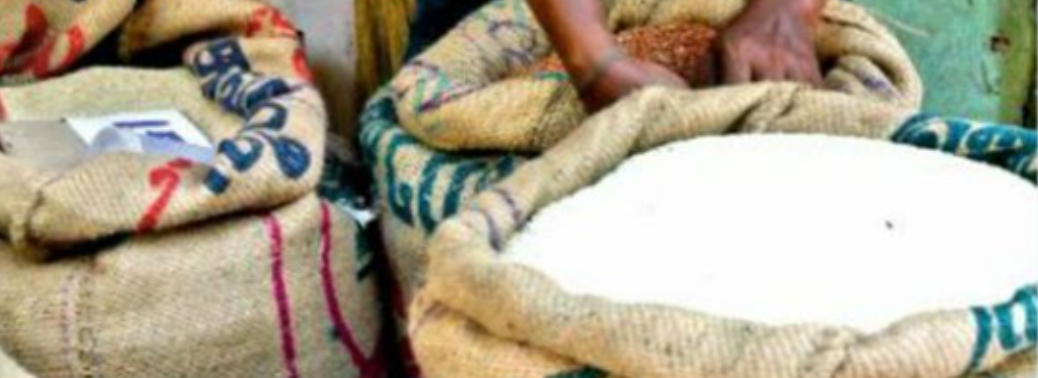
- Context: Government has launched the pilot project for the inter-state portability of ration cards between Telangana and Andhra Pradesh, and between Maharashtra and Gujarat, as part of its ‘One Nation, One Ration Card’ scheme.
What is A Ration Card?
- A ration card is issued to the head of the family, depending on the number of members in a family and the financial status of the applicant.
- It is used by households to get essential food grains at subsidised prices from designated ration shops (also called fair price shops) under the Targeted Public Distribution System (TPDS).
- Over the years, different types of ration cards were issued depending on the level of deprivation. Later, in 2013, when the National Food Security Bill was passed, different ration cards were compressed to just two — priority and Antyodaya (for the poorest).
- The responsibility of identifying eligible families and issuing ration cards to them rests with the state/UT government.
What is a Ration Shop?
- Ration shops can be privately owned or owned by cooperative societies or by the government. Ownership licenses are issued by the concerned state government.
- Presently, commodities including wheat, sugar, rice and kerosene are being allocated as part of the TPDS. State governments have the discretion to provide additional commodities.
What is the ‘One Nation, One Ration Card’ Scheme?
- Since Ration Cards are issued by State Governments, this implied that beneficiaries could procure food grains only from the designated ration shops within the concerned state.
- If a beneficiary were to shift to another state, he/she would need to apply for a new ration card in the second state. There were other complications.
- For instance, after marriage, a woman needed to get her name removed from the ration card issued to her parents, and get it added to the ration card issued to her husband’s family.
- The ONORC scheme attempts to address this gap in TPDS delivery. Essentially, the scheme has been launched keeping in mind the internal migration of our country, since people keep moving to different states in search of better job opportunities and higher standards of living.
- As per Census 2011, 4.1 crore people were inter-state migrants and 1.4 crore people migrated (inter and intra-state) for employment.
- With the ONORC scheme being implemented in Telangana and Andhra Pradesh, the beneficiary can buy food grains from ration shops located in either of the states.
- The same is the case with Maharashtra and Gujarat. The government hopes to implement the scheme across India by June 1, 2020.
SEVA BHOJ YOJANA
17, Jul 2019
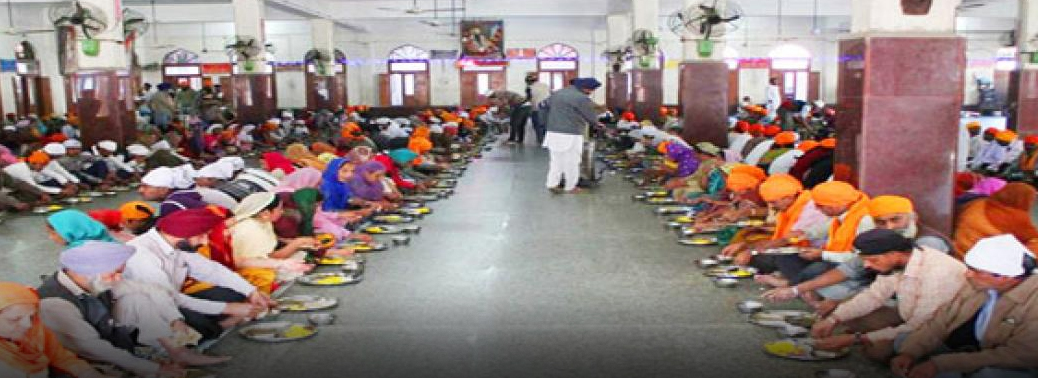
Why in News?
- Seva Bhoj Yojna’ is a Central Sector Scheme of the Ministry of Culture, Government of India.
- It envisages to reimburse the Central Government share of Central Goods and Services Tax (CGST) and Integrated Goods and Service Tax (IGST) so as to lessen the financial burden of such Charitable Religious Institutions who provide Food/Prasad/Langar (Community Kitchen)/Bhandara free of cost without any discrimination to Public/Devotees.
- The scheme is being implemented from 01.08.2018 with a total outlay of Rs. 325.00 Crores for Financial Years 2018-19 and 2019-20.
Objective:
- Under the Scheme of ‘Seva Bhoj Yojna’ Central Goods and Services Tax (CGST) and Central Government’s share of Integrated Goods and Services Tax (IGST) paid on purchase of specific raw food items by Charitable Religious Institutions for distributing free food to public shall be reimbursed as Financial Assistance by the Government of India.
Type of activities supported under the scheme:
- Free ‘prasad’ or free food or free ‘langar’ / ‘bhandara’ (community kitchen) offered by charitable religious institutions like Gurudwara, Temples, Dharmik Ashram, Mosques, Dargah, Church, Mutt, Monasteries etc. Financial Assistance will be provided on First- cum-First Serve basis of registration linked to fund available for the purpose in a Financial Year.
Criteria for Financial Assistance:
- A Public Trust or society or body corporate, or organisation or institution covered under the provisions of section 10 (23BBA) of the Income Tax Act, 1961 (as amended from time to time) or registered under the provisions of section 12AA of the Income Tax Act, 1961, for charitable/religious purposes, or a company formed and registered under the provisions of section 8 of the Companies Act, 2013 or section 25 of the Companies Act, 1956, as the case may be, for charitable/ religious purposes, or a Public Trust registered as such for charitable/religious purposes under any Law for the time being in force, or a society registered under the Societies Registration Act, 1860, for charitable/religious purposes can apply under Seva Bhoj Yojna.
- The applicant Public Trust or society or body corporate, or organisation or institution, as the case may be, must be involved in charitable/religious activities by way of free and philanthropic distribution of food/prasad/langar(Community Kitchen)/ bhandara free of cost and without discrimination through the modus of public, charitable/religious trusts or endowments including maths, temples, gurdwaras, wakfs, churches, synagogues, agiaries or other places of public religious worship.
- The institutions/organizations should have been distributing free food, langar and prasad to atleast 5000 persons in a calendar month can apply under the scheme.
- Financial Assistance under the scheme shall be given only to those institutions which are not in receipt of any Financial Assistance from the Central/State Government for the purpose of distributing free food.
- The Institution/Organization blacklisted under the provisions of Foreign Contribution Regulation Act (FCRA) or under the provisions of any Act/Rules of the Central/State shall not be eligible for financial assistance under the scheme.
Jal Shakti Abhiyan
04, Jul 2019

Why in News?
- Jal Shakti Abhiyan for Water Conservation Launched.
Highlights:
- It is a time-bound, mission-mode campaign that would focus on 1,592 “water-stressed” blocks in 257 districts. The campaign will run through citizen participation during the monsoon season, from 1st July, 2019 to 15th September, 2019.
- The 1,592 blocks, identified as “water-stressed” as per the Central Ground Water Board’s 2017 data, include 313 critical blocks, 1,000-odd over-exploited blocks and 94 blocks with least water availability (for states without water-stressed blocks).
- Jal Shakti Abhiyan is a collaborative effort of various Ministries of the Government of India and State Governments, being coordinated by the Department of Drinking Water and Sanitation.
- The focus of the campaign is on water stressed districts and blocks. The teams of officers from the central government will visit and work with district administration in 1592 water stressed blocks in 256 districts, to ensure five important water conservation interventions.
- The Five Important Water Conservation Interventions are:
- Water conservation and rainwater harvesting,
- Renovation of traditional and other water bodies/tanks,
- Reuse of water and recharging of structures,
- Watershed development and
- Intensive afforestation.
- The water conservation interventions will also be supplemented with special interventions including the development of block and district water conservation plans, promotion of efficient water use for irrigation and better choice of crops through Krishi Vigyan Kendras.
- A large-scale communications campaign has also been planned alongside the JSA involving mass mobilisation of different groups including school students, college students, swachhagrahis, Self Help Groups, Panchayati Raj Institution members, youth groups (NSS/NYKS/NCC), defence personnel, ex-servicemen and pensioners, among various others.
MEITY reported that 2.22 crore villagers are given Digital Education under Pradhan Mantri Gramin Digital Saksharta Abhiyan (PMGDISHA)
29, Jun 2019

CONTEXT:
- Ministry of Electronics and Information Technology reported that 2.22 crore villagers are given Digital Education under Pradhan Mantri Gramin Digital Saksharta Abhiyan (PMGDISHA).
BACKGROUND:
- To increase the Digital Literacy rate in India, Pradhan Mantri Gramin Digital Saksharta Abhiyaan (PMGDISHA) was launched as an integral part of the ‘Digital India’
- The vision of this scheme is that one person in every household becomes digitally literate
- Train them to operate digital devices such as Tablets, Smartphones et cetera.
- Bridge the digital divide, specifically targeting the rural population
- It also ensures high-speed internet access for all, though a secure ecosystem.
Electric Vehicles in India
29, Jun 2019
Fame 2(Faster Adoption and Manufacturing (Hybrid&) and electric vehicles
- The outlay of ₹10,000 crore has been made for three years till 2022 for FAME 2 scheme.
- The centre has sanctioned ₹8,596 crore for incentives, of which ₹1,000 crore has been earmarked for setting up charging stations for electric vehicles in India.
- The government will offer the incentives for electric buses, three-wheelers and four-wheelers to be used for commercial purposes.
- Plug-in hybrid vehicles and those with a sizeable lithium-ion battery and electric motor will also be included in the scheme and fiscal support offered depending on the size of the battery.
Electric Infrastructure
- The centre will invest in setting up charging stations, with the active participation of public sector units and private players.
- It has also been proposed to provide one slow-charging unit for every electric bus and one fast-charging station for 10 electric buses.
Incentives
- To encourage state transport units (STUs) to buy more electric buses, ₹20,000 per kW will be offered as incentive.
- FAME 2 will offer incentives to manufacturers, who invest in developing electric vehicles and its components, including lithium-ion batteries and electric motors.
- The centre has asked states to frame their EV policy and provide additional fiscal and non-fiscal incentives to manufacturers and buyers.
Why the government is pushing EVs to fight climate change
- India has been at the forefront of aligning its policies with its commitment to the Paris accord on climate change, signed in 2016.
- The accord aims to pursue efforts to limit the global temperature rise to 5ºC above pre-industrial levels.
Why is the central government promoting the adoption of electric mobility?
- To reduce the import of crude oil
- NITI Aayog, the government think tank is tasked with devising a mass electric energy-based transport system in India,
What are the main Obstacles in adopting electric mobility?
- A battery, depending on its capacity, will keep a vehicle running at a certain speed for a certain duration.
- Lack of charging infrastructure
- High cost difference between ICE-based vehicles
- firms have invested in making lithium-ion cells for batteries—most of the EV makers assemble the battery packs
- India also lacks the important minerals, lithium and cobalt, that go into making lithium batteries, which are imported from China.
Establishment of ‘gokul grams’ under Rashtriya Gokul Mission
24, Jun 2019

Why in News?
- Funds have been mobilized under Rashtriya Gokul Mission (RGM) for setting up of 21 Gokul Grams as Integrated Cattle Development Centres.
Rashtriya Gokul Mission:
- The RGM has been launched by the Government for conservation and development of indigenous breeds in a focused and scientific manner.
- The mission envisages establishment of integrated cattle development centres „Gokul
- Grams to develop indigenous breeds including upto 40% nondescript breeds.
- Rashtriya Gokul Mission is a focussed project under National Programme for Bovine Breeding and Dairy Development, with an outlay of Rs 500 crore during for three years from 2014-15 to 2016-17.
Objectives:
- Development and conservation of indigenous breeds
- Breed improvement programme for indigenous cattle breeds to improve their genetic makeup and increase the stock; Enhancement of milk production and productivity;
- Upgradation of nondescript cattle using elite indigenous breeds like Gir, Sahiwal, Rathi, Deoni, Tharparkar, Red Sindhi and Distribution of disease free high genetic merit bulls for natural service.
Implementing Agency:
- Rashtriya Gokul Mission is being implemented through “State Implementing Agencies (SIA) viz Livestock Development Boards.
- All Agencies having a role in indigenous cattle development are “Participating Agencies” like CFSPTI, CCBFs, ICAR, Universities, Colleges, NGO‟s, Cooperative Societies.
Gokul Gram:
- These are Indigenous Cattle Centres and will act as Centres for development of Indigenous Breeds.
- They’ll be established- a) in native breeding tracts and b) near metropolitan cities for housing the urban cattle.
- A dependable source for supply of high genetic breeding stock to the farmers in the breeding tract.
- Self-sustaining and will generate economic resources from sale of milk, organic manure, vermi-composting, urine distillates, and production of electricity from bio gas for in house consumption and sale of animal products.
- Also function as state of the art in situ training centre for Farmers, Breeder.
Pradhan Mantri Kisan Samman Nidhi (PM-KISAN)
19, Jun 2019
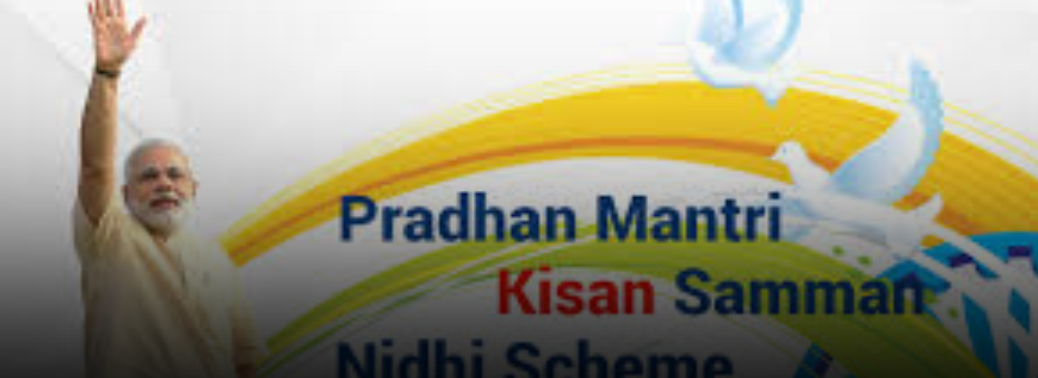
Objective:
- With a view to Augment the Income of the Small and Marginal Farmers (SMFs), the Government has launched a new Central Sector Scheme, namely, “Pradhan Mantri Kisan Samman Nidhi (PM-KISAN)” in the current financial year.
- The PM-KISAN scheme aims to supplement the financial needs of the SMFs in Procuring Various Inputs to ensure proper Crop Health and appropriate yields, commensurate with the anticipated farm income at the end of each crop cycle.
- This would also Protect them from Falling in The Clutches of Moneylenders for meeting such expenses and ensure their continuance in the farming activities
Definition of Families:
- The SMFs landholder farmer family is defined as “a family comprising of husband, wife and minor children who collectively own cultivable land upto 2 hectare as per land records of the concerned State/UT”
Fund:
- Financial year 2018-19, a budget provision of Rs. 20,000 crores has been kept.
Benefit to Eligible SMFs:
- Under the Scheme, a Direct Payment of Rs. 6000 per year will be transferred in three equal instalments of Rs. 2000 Every Four Months into the Aadhar ceded bank accounts of eligible landholding SMFs families.
Monitoring of the Scheme:
- For effective review and monitoring of the scheme, a Project Monitoring Unit (PMU) at Central level will be set up in DAC & FW.
JANAUSHADHI SCHEME
17, Jun 2019
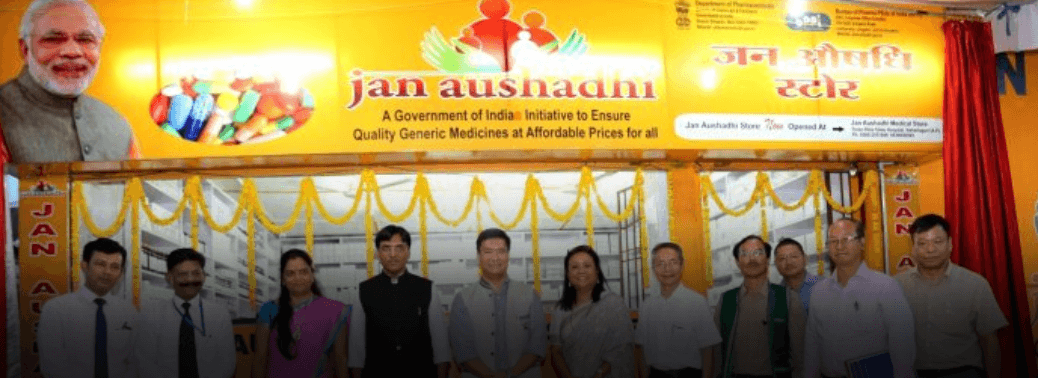
Context:
- The Bureau of Pharma PSUs of India (BPPI), has found 18 Pharmaceutical companies substandard drugs which were supplying under Janaushadhi scheme.
Objectives of the scheme:
- Making quality medicines available at affordable prices for all, particularly the poor and disadvantaged, through exclusive outlets “Pradhan Mantri Bhartiya Janaushadhi Kendras”, so as to reduce out of pocket expenses in healthcare.
Implementation Agency:
- BPPI (Bureau of Pharma PSUs of India), under the administrative control of the Department of Pharmaceuticals, Ministry of Chemicals & Fertilizers, Government of India will be the implementation agency for the PMBJP.
Key Features:
- State Governments or any organization / reputed NGOs / Trusts / Private hospitals / Charitable institutions / Doctors / Unemployed pharmacist/ individual entrepreneurs are eligible to apply for new Pradhan Mantri Bhartiya Janaushadhi Kendras.
- The applicants shall have to employ one B Pharma / D Pharma degree holder as Pharmacist in their proposed store.
- Pradhan Mantri Bhartiya Janaushadhi Kendras can be located within Government hospital premises as well as Private hospital premises or anywhere outside.
- Financial support to applicants: An amount of Rs.2.5 lakhs shall be extended to NGOs/agencies/individuals establishing Pradhan Mantri Bhartiya Janaushadhi Kendras in Government hospital premises where space is provided free of cost by Government to operating agency: Rs. 1 lakh reimbursement of furniture and fixtures Rs. 1 lakh by way of free medicines in the beginning Rs. 0.50 lakh as reimbursement for computer and peripherals, internet, etc.
One Nation One Card Scheme
02, Mar 2019

In News
- PM Narendra Modi Monday launched the indigenously-developed National Common Mobility Card (NCMC) to enable people to pay multiple kinds of transport charges, including metro services and toll tax, across the country.
About:
- Dubbed as ‘One Nation One Card’, the inter-operable transport card would allow the holders to pay for their bus travel, toll taxes, parking charges, retail shopping and even withdraw money.
- This card runs on RuPay card and it will eliminate all your travel related problems. Many a times, it do not have change to pay in cash while travelling in metro, bus or train, or for toll and parking. To overcome this issue, an automatic fare collection system was introduced. Since systems were made by different players, a card issued in one city did not work in another city.
- Now, the dream of ‘One Nation One Card’ has been realised. People can also withdraw money using this Common Mobility Card.
- This RuPay card can be used for travelling in metros in any part of the country. In simple terms, RuPay card merged with the mobility card With the advent of this indigenously-developed and one-of-its-kind card, the country is no longer required to be dependent on foreign technology. Now, we have this ‘Made in India’ card. Only a select few countries have this technology of ‘One Nation One Card’.
- The stored value on card supports offline transaction across all travel needs with minimal financial risk to involved stake-holders. The service area feature of this card supports operator specific applications e.g. monthly passes, season tickets etc.
- The major challenge associated with the Automatic Fare Collection System (AFC) implementation in the country until now is the lack of indigenous solution provider, it stated. Till now, AFC systems deployed at various Metros are from foreign players. In order to avoid the vendor lock-in and create an inter-operable system, there was a need to develop indigenous standards and AFC system under Make in India initiative. In order to ensure a seamless travel across metros and other transport systems, in addition to retail shopping and purchases, the Ministry of Housing & Urban Affairs (MoHUA) came out with the NCMC program.
War Memorial
26, Feb 2019
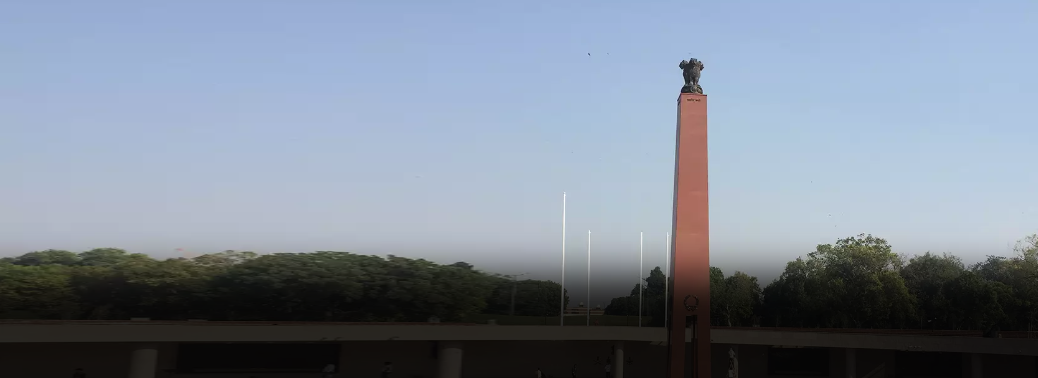
- Prime Minister Narendra Modi dedicated a new National War Memorial, situated in the India Gate complex in New Delhi, to the nation.
About:
- PM lit the flame positioned at the bottom of the stone obelisk to pay homage to the soldiers who died in the line of duty.
- The National War Memorial complex, spread across 40 acres, includes a central obelisk, an eternal flame, and six bronze murals depicting famous battles fought by the Army, the Air Force and the Navy.
- The design of the National War Memorial has a layout comprising four concentric circles, namely, the ‘Amar Chakra’ or Circle of Immortality, the ‘Veerta Chakra’ or Circle of Bravery, the ‘Tyag Chakra’ or Circle of Sacrifice, and the ‘Rakshak Chakra’ or Circle of Protection.
- Statues of 21 awardees of Param Veer Chakra have also been installed in the National War Memorial. This includes those of the three recipients of the country’s highest gallantry award-Subedar Major (Hony Capt) Bana Singh (Retired), Subedar Major Yogendra Singh Yadav and Subedar Sanjay Kumar. The National War Memorial will not replace the Amar Jawan Jyoti which was built in 1972 underneath the India Gate arch to commemorate
- soldiers killed in the Indo-Pak War of 1971. The memorial will remain intact, a senior army officer told the news agency PTI.
- The national soldiers” memorial is a symbol of the nation’s gratitude to those men who made the supreme sacrifice after we gained Independence.
- The names of 25,942 fallen heroes, along with their rank and regiment, are inscribed in the 16 walls of the memorial.
- Apart from the soldiers who were killed in the wars in 1947, 1962, 1965, 1971 and 1999, the names of the soldiers who died while on Indian Peace Keeping Force Operations in Srilanka is also inscribed on the memorial.
Western Powers on Pulwama Attack
26, Feb 2019
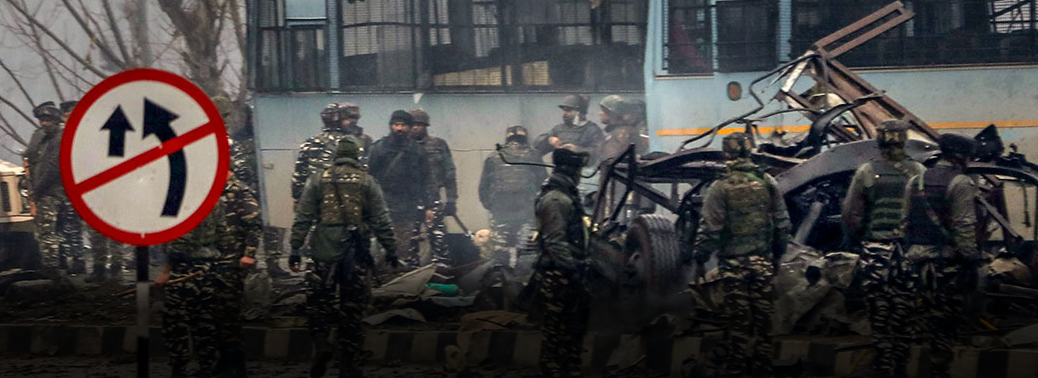
- The European Union (EU) and Germany have asked Pakistan to act on terror in a call made by Pakistani foreign minister to EU’s and Germany foreign minister to brief about the situation of heightened tension post-Pulwama attack.
About:
- The attack on 14th February killed more than 40 CRPF personnel was claimed by Pakistan-based terror group Jaish-e-Mohammad (JeM).
- EU High Representative for foreign affairs and security policy had called Pakistan to not only act on United Nations listed terrorist but also individuals.
- She had highlighted the “need to continue addressing terrorism including clear and sustained actions targeting not only all UN-listed transnational terrorist groups but also individuals claiming responsibility for such attacks.”
- In a press release issued by EU it “stressed the urgency to de-escalate the situation” arising between the two nuclear powers India and Pakistan.
- In a tweet, German’s foriegn ministry said, “Pakistan resolutely needs to put a stop to cross-border terrorism.”
- The tweet also called on India and Pakistan “to work to de-escalate the situation.” “The European Union’s policy has always been to promote a dialogue between Pakistan and India to sort out differences… [Pakistan] needs to continue addressing terrorism including clear and sustained actions targeting not only all UN-listed terrorist groups but also individuals claiming responsibility for such attacks,” the statement said.
- The statements shared a sharp tone in telling Pakistan to act against the Jaish-e-Mohammad, Lashkar-e-Taiba and other banned groups, something welcomed by External Affairs Ministry officials.
Pakistan Version
- But what is interesting to note is, the release issued by Pakistan’s Ministry of foreign affairs (MOFA) on the same conversations makes no mention of terror.
- Instead, it said that the Pakistani foreign minister has expressed his readiness to his EU and German counterparts to investigate the Pulwama terror attack if India shares “actionable intelligence” and went on to rake the Kashmir issue.
- Pakistani foriegn Minister post-Pulwama has been calling countries across the world but none of the releases by Pakistani foriegn ministry mentions the issue of terror.
US:
- In August of 2018 US secretary of state, had called newly-elected Pakistani Prime Minister Imran Khan asking to act on terror among other things according to a readout by United States- State Department.
- The Pak Mofa was quick to point out publically in a tweet saying this is “factually incorrect statement issued by the US State Department” but the state department continued to stand by its read-out.
- Calling on Pakistan to take “clear and sustainable” actions against terror groups including those who have taken responsibility for the Pulwama attack, the European Union joined a number of international entities attempting to defuse tensions between New Delhi and Islamabad over the weekend.
Merchant Exporters to get Interest Equalisation Scheme
03, Jan 2019
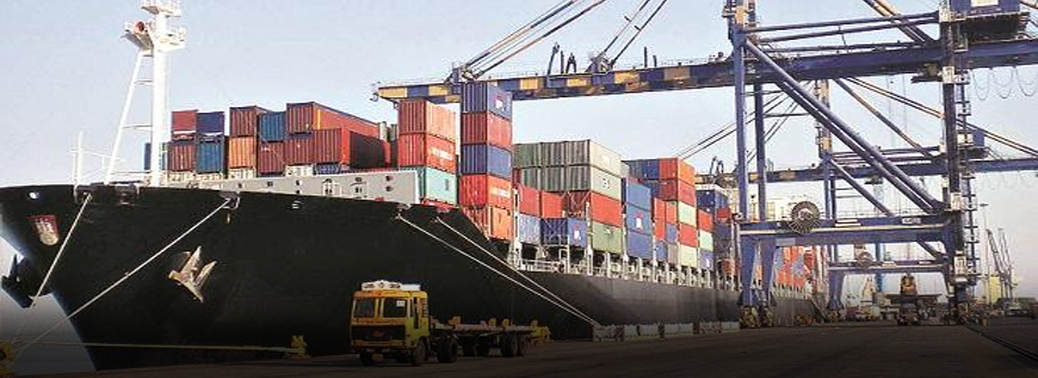
In News:
- The government has decided to provide 3% interest subsidy to merchant exporters to enhance flow of funds for them with a view to boosting outbound shipments.
Explained:
- The decision was taken by the Cabinet Committee on Economic Affairs.
- “The proposal will entail benefits of around Rs. 600 crores to exporters on interest equalization for the remaining period of the scheme
- These products are largely in MSME/labour-intensive sectors such as agriculture, textiles, leather, handicraft and machinery.
- The proposal will entail benefits of around Rs 600 crore to exporters on interest equalisation, for the remaining period of the scheme, set to end in April 2020.
- The IES allows small and medium exporters in labour-intensive sectors to avail of loans from banks at a lower rate of 3 per cent.
Interest Equalisation Scheme:
- The Cabinet Committee on Economic Affairs, has given its approval for Interest Equalization Scheme (earlier called Interest Subvention Scheme) on Pre-& Post Shipment Rupee Export Credit with effect from 1st April, 2015 for five years. The scheme will be evaluated after three years.
- Originally announced as a measure to boost exports for five years, the IES on pre- and post-shipment rupee export credit was revived in 2015 at a rate of 3 per cent for 416 specific goods categories (four-digit tariff).
- The sectors covered are mostly labour-intensive and include agriculture or food items, auto components, handicraft, electrical engineering items, and telecom equipment. The scheme is, however, not available for merchant exporters. The last Budget had allocated Rs 2,500 crore for the IES.
The following are the features of the Interest Equalization Scheme:
- The rate of interest equalisation would be 3 percent. The scheme would be available to all exports of MSME and 416 tariff lines. Scheme would not be available to merchant exporters earlier which is now modified to allow them to boost the exports
- The duration of the scheme would be five years with effect from 1.4.2015.
- The scheme would be funded from the funds available with Department of Commerce under non-plan during 2015-16 and the restructured scheme would be funded from plan side from 2016-17 onwards.
- Ministry of Commerce & Industry may place funds in advance with RBI for requirement of one month and reimbursement can be made on a monthly basis through a revolving fund system.
- On completion of three years of operation of the scheme, Department of Commerce may initiate a study on impact of the scheme on export promotion and its further continuation. The study may be done through one of the IIMs.
Significance of This Move:
- Merchant exporters also play a pivotal role in exports of MSME manufacturers as they export a significant quantity of products through merchant exporters
- Merchant exporters play an important role in finding overseas markets, getting export orders, communicating to MSME manufacturers the current preferences, trends and demand for products in international export markets.
- The benefit will push manufacturing in micro, small and medium enterprises (MSMEs), creating job opportunities as well
- Merchant exporters account for over 35 per cent of the country’s exports.
- The high cost of credit equally impacts their competitiveness as they factor in the high interest costs in their export costing.






